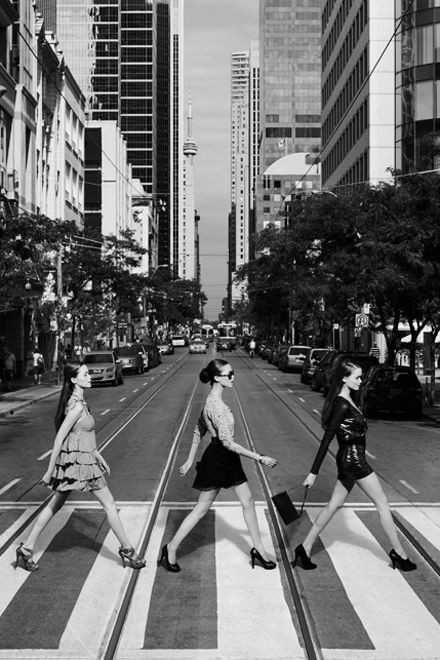
June’s pre-owned edit

Sustainable fashion is how we started this adventure at the Forward Lab. Here we share with you new designers and trends but also we educate ourselves on what sustainable fashion means at the core: fabrics, productions processes, innovation and more.

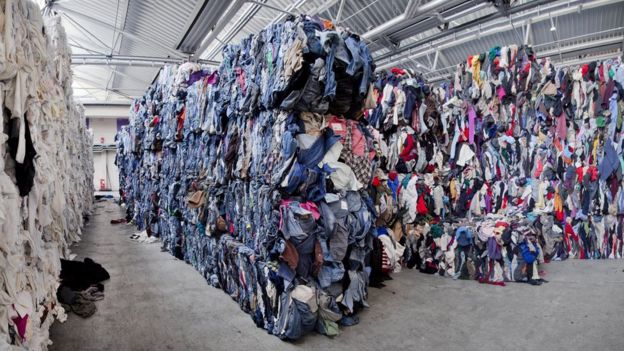
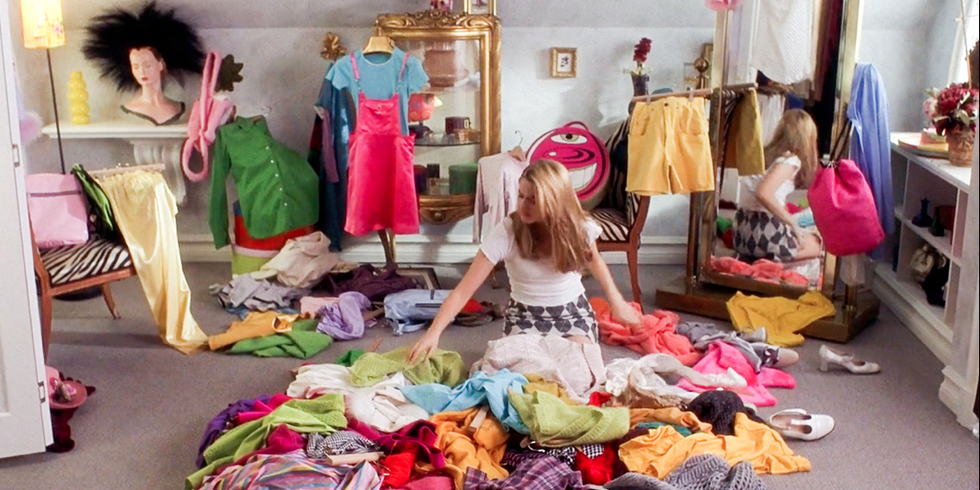
I had just accepted my first job in London at Goldman Sachs and I was eager to get involved in environmental committees to tackle waste, mostly around food and disposal and I thought ok – this is ‘your thing’ and good on you for wanting to make this happen (hello intrapreneur). But then I started work on the Stitchfix IPO and began to delve deep into consumer buying patterns, machine learning to optimize consumption and the environmental cost of fashion.
It took me 2 years to make the jump, but I finally founded Whering in the summer of 2020 out of a profound desire to democratise the personal styling landscape and fundamentally make efficient the way we buy clothes and use them.
For me the system was broken. The vicious cycle of not being able to see what you own, impulse buying (while never getting it quite right) and the lack of inspiration in the styling process meant only one thing: we had to take it digital and harness the power of AI to personalise our fashion experience.
Thank you! We came up with this hashtag to encourage a “philosophy” that revolves around mindful and conscious shopping, as opposed to impulse buying. To avoid this, we believe outfit planning is key to avoid decision fatigue. I like to think of Wardrobe Zen as a state of mind which is at the complete opposite end of the spectrum to the ‘I have nothing to wear syndrome’. For me it’s all about reusing and loving what you own for years to come whilst strategically incorporating quality pieces into your wardrobe.
When we talk about “recovering lifestyle hypocrites” we’re also poking fun at ourselves! Maybe you used to think of yourself as a bit of an eco-warrior with all the best sustainable habits but would still crack and purchase the latest trend from a fast fashion brand. Or maybe you just had too many clothes hanging in your closet that you never realistically wore.
As I mentioned earlier, it was when I was working in the City that I kickstarted my whole introspective journey into my own contribution to the issue of consumerism (yes I had been to Zara that day to buy yet another ruffled top during my lunch break and I knew this had to stop). Sometimes it can be difficult to actualise the best of intentions!

Celine Semaan: she is the executive director of Slow Factory (an open education platform on fashion, intersectional feminism and colonialism) – she gives us a more nuanced views on climate action and consumption, in a world where solutions to better the planet are seen as either ‘good’ or ‘bad’, and often misleading us to consume more. I love how effortlessly she addresses the most complex of topics and how she empowers the community through education and really practical resources.
I think we can all agree that the biggest challenge facing the fashion industry at the moment is overconsumption. At Whering, we want to help women use the pieces they already own as efficiently as possible and to extend the life cycle of the clothes lying idle in our wardrobes. For me, part of the problem of the ‘nothing-to-wear’ dilemma was that I didn’t have nothing to wear but nothing new to wear. We keep buying because we think that just one more item will unlock our ideal wardrobe – but how can it if we have no accessible inventory of what we own?
We also want to personalise our Wherers’ shopping experience to buy less, but better. We’re looking to drastically reduce the carbon and water footprint of consumers by focusing on the two parts of the value chain that they control: purchasing and utilisation. This is why having a digital inventory is so key – to aid our visual memory. Not only does it allow you to ‘shop your own wardrobe’ to get that newness fix, but having an organised digital wardrobe helps you identify what you really need and what pieces can unlock a myriad of combinations. With Whering, our users can track their wears, their most worn items, recreate different versions of their looks and become true outfit repeaters.
We already have an engaged, tight-knit community of over 23k users on the app, who spend on average 10 minutes a day creating hundreds of new outfits, digitally. Our most popular feature is our Dress Me styling tool (inspired by Cher’s iconic wardrobe scene in Clueless) which has been used 2.5m times to generate new unexpected outfit combinations. We show our community that sustainability above all is a mindset and help them make more circular fashion choices: mix-matching, rewearing and caring for your clothes is the future, and going digital is a step towards democratising personal styling. We empower our Wherers to differentiate between buying trends vs putting outfits together that actually work in the long term (saving us £££ and allowing us to be more intentional). By creating digital outfits first you also only have to try on your top 2-3 picks – imagine what we could all do with that extra time compounded over a year?!
We want to keep growing our community by staying true to our mission and values, and involving our users as much as possible as we continue to develop the app. We’re also looking forward to rolling out our Brand Ambassador programme to bring together sustainably-minded women.


Make yourself a wishlist – sleep on it, debate it, fight it and if you still come back to it, it deserves to find a place in your wardrobe. I’ve learnt over the years to negate the cheap and easy buys by looking inwards first (aka your digital wardrobe: hint Whering), evaluating what I really need and will bring be continuous joy (for the longest possible time) as well as identifying and saving up for dream pieces that will serve me in my journey. Shifting your mentality to investing in quality creates a special relationship with a piece and fundamentally makes you fight harder to take care of it, style it differently and possibly resell it (circularity is a thing guys).
Are the greatest ways to step away from overconsuming for the wrong reasons and shift into a more playful yet circular relationship to clothes. For me, this step is all about upending the ‘buy, use, dispose’ model many of us have lived by in the last two decades. Allowing yourself that freedom to experiment with fashion by renting pieces you wouldn’t want to own forever, buying preloved pieces on Depop or Vestiaire Collective usually allows you to buy better quality for cheaper and borrowing pieces. Sharing really is caring, for people and the planet.
Again, slightly biased because my personal mission is to get us to reuse what we own – but – by removing the constant subliminal messaging from the wrong brands, influencers and communities and focusing instead on following accounts that empower with their mission, educate and tell real stories about what they do we consume less and better. Connecting with smaller designers, slow-production brands and ecosystem stakeholders is a powerful way of helping you identify what ‘things’ you really want and need and what else is just white noise we’re all overwhelmed by. Good On You also has all the goss on brand ratings – so look ‘em up before you follow.
More transparency and collaboration between brands to achieve a total overhaul of the current fashion industry model. I’m an optimist at heart so I refuse to believe that all hope is lost in terms of fashion and sustainability, but it’s obvious that we cannot continue at this rate for much longer.
For me, we need to see a fundamental paradigm shift on both sides of the value chain: production/consumption and utilisation. On the former, stringent regulations in place to challenge brand greenwashing (as this really messes with the mind of the consumer – and normalising legitimacy is the only way forward), restrictions on the exorbitant number of collections produced by fast fashion houses and laws that enforce living wage and garment worker protection (as well as environmental pollution and waste disposal guidelines).
Fundamentally, brands need a better understanding of demand. On the data side, Whering creates unique insights into the ‘black box’ of the apparel industry: wardrobe utilisation & composition data. This will enable retailers to better tailor their product range to consumer needs and ultimately reduce waste and unsold stock. Smart sizing technology implemented across the brand ecosystem is also a game-changer here.
From the consumer standpoint, efficiently using the pieces you already own is one of the easiest things to limit your fashion carbon footprint. Here we need to see a burgeoning system of circular advocates and businesses, to ensure we make throwaway culture a thing of the past by ensuring the consumer has easy access to greener choices right throughout a piece’s lifecycle (purchase, care, resell, donation, recycle). The key to real transformation here will be swapping the Amazon-esque ease of fast fashion buying and getting us all to treat the garments we buy like the good friends that they are (not my quote but bloody on point).
Our next move is to create an impact dashboard for our Wherers, to empower them to understand the impact of purchasing decisions and the beauty of offsetting certain behaviours with more conscious ones. We’re also onboarding a network of green dry-cleaners, donation points and repurposing services across the UK to make repurposing, mending and donating a little more intuitive.
Finally, we’re talking about taking the app social so our Wherers can add their friends and see what’s in each other’s closets! We’d love to introduce a “request to swap” function as well to encourage even more usage of clothes and community in the fashion space.
Find out more about Whering here.

When we consider how to combat a sustainable way forward in fashion, it’s not often the nitty gritty details that spring to mind at first. Fast fashion and throwaway style culture is something that we’re all becoming more aware of (thankfully), and often when you talk to people about being more sustainable with fashion, it’s clear that globally we are focusing on being more conscious and investing in pieces that will last and that are ethically made.
But what does ethically made actually mean? Where are the parameters? And how often do you hear people looking into the specifics of certain everyday, common materials such as cotton? Probably not very often, but that’s where we can certainly direct some more focused attention in the fashion industry.
After all, the textile industry’s environmental problems do mostly relate to the raw materials used in creation: cotton, fossil-based fibres such as polyester, and viscose (the most common man-made cellulosic fibre), and they are all associated with serious environmental concerns. According to the Ellen Macarthur Foundation’s Make Fashion Circular report: ‘If nothing changes, by 2050 the fashion industry will use up a quarter of the world’s carbon budget.’
Statistics on cotton are particularly damning, with the World Wildlife Organisation stating that although the global reach of cotton is one of the widest material reaches, ‘current cotton production methods are environmentally unsustainable—ultimately undermining the industry’s ability to maintain future production.’
In fact, the Better Cotton initiative shows us that ‘less than 25% of cotton is grown in a way that actively protects people and the environment.’ According to the Sustainable Cotton Ranking analysis too, ‘uptake of more sustainable cotton remains relatively low with most of the heavy lifting done by a growing number of leaders.’ Ultimately, in terms of engaging brands and companies on a bigger level in directing consumer attention to ethically produced cotton, although there has been some significant improvement in recent years, there’s still a lot of work to do.
Step in the New Cotton Project, a circular fashion initiative involving 12 pioneering players in the fashion industry. As a world-first, the consortium of brands, manufacturers, suppliers, innovators and research institutes participating in the European Union-funded project will prove that circular, sustainable fashion is not only an ambition, but that it can be achieved today.
The fashion industry produces nearly twice as many clothes today as it did two decades ago and, despite awareness of single-use and throwaway culture rising, demand for clothing is only growing. According to research by the project, the equivalent of one garbage truck of textiles is landfilled or burned every second.
Designed as a means to directly combat this, over a three-year period, the New Cotton Project will ensure that textile waste is collected, sorted and regenerated into Finnish biotechnology group Infinited Fiber Company’s unique, cellulose-based textile fibres. From here, the fibres will be used to create different types of fabrics for clothing.
Crucially, and in a move not seen before, the clothing will be designed, manufactured and sold by global brand Adidas, as well as companies within the H&M Group. At the end-of-use, apparel take-back programmes will collect the clothing to determine the next phase in their lifecycle. Infinited Fibre’s patented technology can regenerate cellulose-rich textile waste into unique fibres that look and feel like cotton. It’s this regeneration and recycling element that is central – and a blueprint for larger brands with huge emphasis to join the movement.
‘We are very excited and proud to lead this project, which is breaking new ground when it comes to making circularity in the textile industry a reality,’ says Infinited Fiber Company’s Co-founder and CEO Petri Alava. ‘The enthusiasm and commitment with which the entire consortium has come together to work towards a cleaner, more sustainable future for fashion is truly inspiring.’
The project is recapturing the valuable, raw materials in discarded clothing and regenerating them back into high-quality fibres that can be spun into new yarn, woven into new fabric, and designed into new clothes – again and again. Perhaps one of the most exciting elements of the movement, the project also aims to act as an inspiration and steppingstone for further, even bigger circular initiatives in the industry going forward. Not to mention make us, as consumers, consider the finer detail in our sustainable treatment of fashion.
Not only can we then focus on purchasing organic and sustainable cotton products, but brands can and will start to get more involved in this also – once they’ve seen the way paved by influential brands. Watch this space.
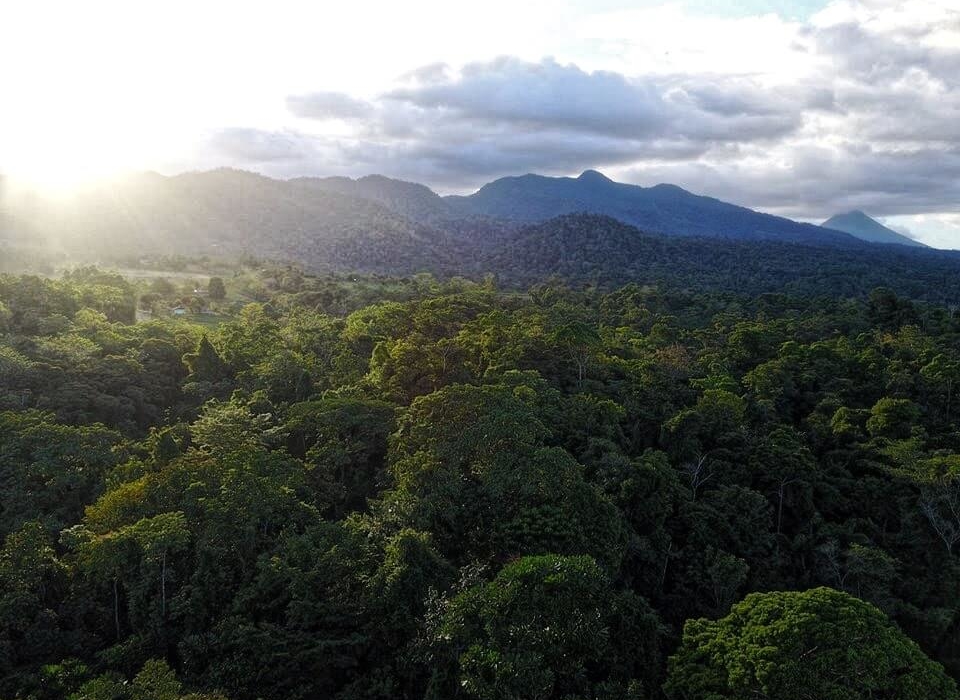
It’s for this reason that the movement is picking up pace – it’s more than necessary for future-proofing our planet. As the Climate Reality Project points out, ‘in addition to a long list of incredible benefits for farmers and their crops, regenerative agriculture practices help us fight the climate crisis by pulling carbon from the atmosphere and sequestering it in the ground.’
But what is regenerative agriculture, exactly? According to Regeneration International, it’s ‘a holistic land management practice that leverages the power of photosynthesis in plants to close the carbon cycle, and build soil health, crop resilience and nutrient density. Regenerative agriculture improves soil health, primarily through the practices that increase soil organic matter. This not only aids in increasing soil biota diversity and health, but increases biodiversity both above and below the soil surface, while increasing both water holding capacity and sequestering carbon at greater depths, thus drawing down climate-damaging levels of atmospheric CO2, and improving soil structure to reverse civilization-threatening human-caused soil loss.’
It’s worth noting that the details are often incredibly complex (especially to anyone who doesn’t know a thing or two about rural practices and the farming industry) and are constantly evolving. It’s picking up momentum, which is brilliant, but it can be hard to pin down what, exactly, it means. The concept is simple though, so let’s start there. Essentially, regenerative agriculture is a farming principle that works to regenerate the soil, place nutrients back and replenish the earth, working with as opposed to working against nature.
These principles and practices include something called over-cropping, whereby you plant to cover soil rather than harvest. Bare soil is bad soil, so regenerative agriculture uses cover crops to maintain living roots in the soil year-round and no gaps. Regenerative farming minimises the use of pesticides or chemical intervention, and seeks to reduce physical disturbance or intervention. It also works to increase diversity through the planting of lots of different plants and crops, so as to rich, varied and nutrient-dense soil.

But how does sustainable farming link to ethical fashion? Agriculture is often only associated with food systems and animals, but it’s important to realise the link between this and fashion, too. Wool production, cotton creation, it’s all a part of the wider farming industry, and the fashion industry and its supply chains are intrinsically connected to soil degradation.
Statistics on cotton are particularly damning, with the World Wildlife Organisation stating that although the global reach of cotton is one of the widest material reaches, ‘current cotton production methods are environmentally unsustainable—ultimately undermining the industry’s ability to maintain future production.’ The concerns we have around sustainable food systems, then, directly apply to the future of fashion as well.
It’s about exploring how we can approach fashion regeneratively alongside the regenerative agriculture push, and thus, raise awareness of this also. Let’s start with Fibreshed. A fibreshed is a regional system, a specific geographical location, that defines and offers boundaries to a natural textile resource base. This allows textiles to be created responsibly, minimising waste and benefitting the environment.
The not-for-profit Fibreshed, which started in 2010 in California, has supported over 30 official Fibreshed communities all over the world. The organisation implements climate beneficial agriculture, rebuilds regional manufacturing, and connects end-users to the source of fiber through direct educational offerings. This ethos looks at ethical fashion production as an entire system, and works towards a soil to soil concept whereby textiles are grown, created, designed, produced, worn and composted locally.
As it stands, sustainable fashion doesn’t often actively give back to the land, but in practices such as this, that could change. Reducing our consumption of fast fashion is great but it’s about making the eco-fashion movement regenerative, too.
Carbon Cycle reports that ‘in 2011, Fibershed prototyped a “150-mile wardrobe” from regionally grown fibers, natural dyes and local labor that generated zero toxic fresh water effluent, reducing the CO2 footprint to one sixth that of conventional garments, and developing a network of over 200 urban designers and rural farmers willing to work together to build a new model for fiber systems.’ Patagonia, too, now works with regenerative organic cotton farms in India to produce clothing that actually does something good, as well as helping to mitigate a bigger problem.
Want to know more about regenerative agricultural practices? You can actually now combine your love for travel, seeing the world and educating yourself with incredible trips and homestays that immerse you within regenerative agriculture. Agritourism is on the up, and as Evie Ramirez points out in a feature she wrote for us last year, ‘is a meaningful and effective way for the hospitality industry to educate and entertain tourists while supporting a wholesome, thriving economy. For visitors, it’s a unique, experiential learning opportunity to understand agriculture. For farmers, it’s a way to supplement income during off-seasons, gain recognition for their agricultural produce and protect their land’s natural resources and amenities.’ Look also for regenerative farming certification: find more info here.
You’ll also find that organisations such as Regenerative Travel have plenty of Farm to Table sustainable escapes on their books, too. Places such as Finca Luna Nueva in Costa Rica offer guests an insight into how regenerative farming can change the outlook of the ecosystem. As Regenerative Travel put it: ‘The essence of Finca Luna Nueva is a shining passion for a regenerative relationship with natural resources. Certified biodynamic, a farm approach of replenishing and feeding into the natural life cycle is key to a harmonious, sacred bond with the land and ecosystem.’

Collect all your food and kitchen scraps to create a nutrient rich meal for your soil.
Opt for planting something such as grazing rye, mustard (fast-growing and can be incorporated into the soil after a few months to boost organic production), winter field beans or peas (great for boosting nitrogen) or buckwheat.
This is a great one for small urban gardens as it’s relatively easy to do when you don’t have a big garden to tend to. For regenerative farming, it’s recommended to pull one crop up and replace it with another on the same day. This decreases soil exposure and increases overall yield potential.
Implement a permanent bed structure whereby you use the same soil season to season, instead of turning it over all the time and releasing carbon into the atmosphere. You can also use leaves or straw as mulch and use a broad fork as a minimally invasive way of loosening the soil.
Think of them as playing a leading role in the diversity of your garden and see them as protectors of your precious plants. Only trim them when they get big enough to annoy you (once or twice a year).
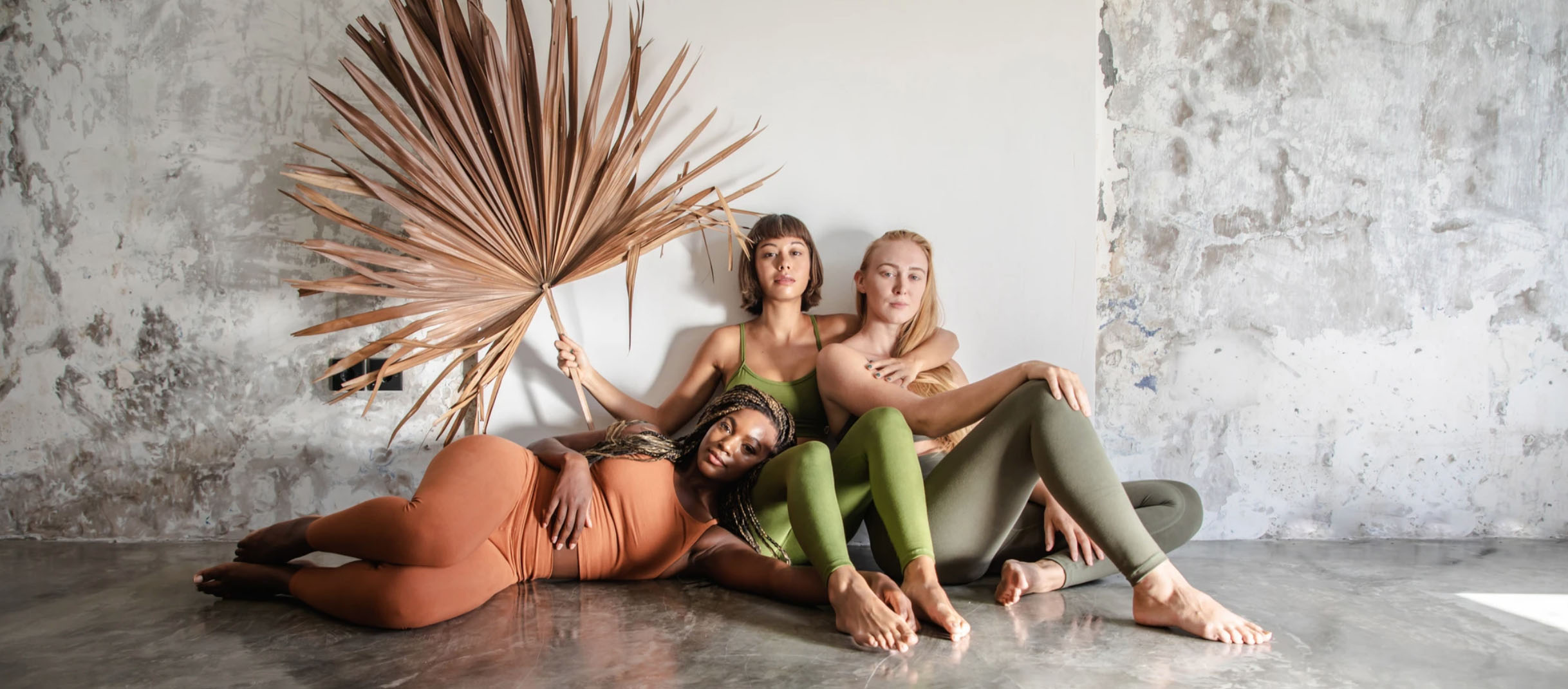

Ghost of my fashion past that I’m trying to wash and care for carefully in order to wear them longer
Organic Agolde jeans that are oh-so comfy thanks to the balloon shape but will now never compare to the feeling of pulling on my WFH BFFs: sweatpants
Investment buys that I’m over-precious about because I spent so long considering them – namely a hemp Jacquemus blazer that I fell in love with thanks to how similar the soft blue hue is to one of my favourite paintings
Summer dresses that I’d shuffled right to the front with the aim of listing them on a rental platform. London then became gloriously hot and they were all I wanted to wear (ahh, linen)
Vintage finds that still need alterations (including some trousers from Paris that I picked up five years ago)
A peony-pink Maggie Marilyn dress that remains a really special gift
‘Exploding zipper’ pieces – styles I no longer fit into after jumping on the banana bread, TikTok pasta and whipped coffee trends during lockdown.
Everything that’s left I cherish, but nothing really goes together or can be thrown on without much thought – plus 80% is black instead of the joyful colours that I desperately want to be wearing as my diary starts filling up again. So, I thanked my lucky stars when an email came through from The Forward Lab’s founder, Joy, asking me if I’d like to try out the services of a sustainable stylist. While I’ve gotten to know some amazing sustainable brands through my work and what planet-friendly fabrics to look for, I had little idea of how to put complete looks together, or how to turn my existing wardrobe into a capsule closet that’s vibrant, interchangeable and aligned with my values. Cue Cassandra Dittmer.

Based in Los Angeles, Dittmer is an international sustainable brand consultant and fashion stylist. “I’ve been in the styling industry for about ten years and I started more traditionally in the red carpet space,” reveals Dittmer at the start of our Zoom call, sharing that she moved to LA for the weather and hiking, not the glamour. “I fell into entertainment and fashion after studying fashion design and for the first seven years I was just happy to be working and supporting myself in a new industry and a new city,” she continues. It was when she chose to go solo and launch her own business that it became clear she needed to decide exactly what she wanted people to come to her for. “I wanted there to be integrity to my work and I didn’t want to just take up space. I slowly started to become more interested in sustainable and ethical fashion, which I was always into, and I realised that it was still a bit of an afterthought,” she says. Eco-friendly style wasn’t what the conversation was centered around at the time, but she felt that it needed to be.
Having since gone from strength to strength in that field, Dittmer has launched an eStyling service that’s all about placing ethics and values right at the forefront of each fashion collaboration. Prices for the sustainable styling packages start at £120 and go up in tiers to £650 for a full closet refresh. Plumping for Tier 1, my trial began with a questionnaire that’s designed to unearth tastes, concerns and priorities. “Everyone is at a different place in their journey and has different values,” explains Dittmer of the meaning behind each considered question and the initial consultation. “For some people it’s important to shop local, for others it’s perhaps more important to integrate diversity or to find vegan products. For me, it’s all about looking at sustainability in a way that’s not ‘one size fits all’.”
After filling in my responses regarding everything from style icons to favourite body features, a beautiful Curated Digital Boutique landed in my inbox seven days later. It ticked every box by sourcing and showcasing easy core pieces that are very buildable, mixed with manageable amounts of personality and colour.

15 new brands were placed on my radar (10 of which I’d never heard of and was excited to discover!), each accompanied by a short blurb explaining how they meet my needs when it comes to sustainable production, ethical work conditions, and female-led brands. Right at the end came a list of tips and useful resources. Bookmarking the PDF, I felt inspired to learn even more about these labels and designers, and that I was officially out of my clothing rut.
Click here for more information about Cassandra Dittmer and eStyling.
Don’t miss The Forward Minds podcast with Cassandra.
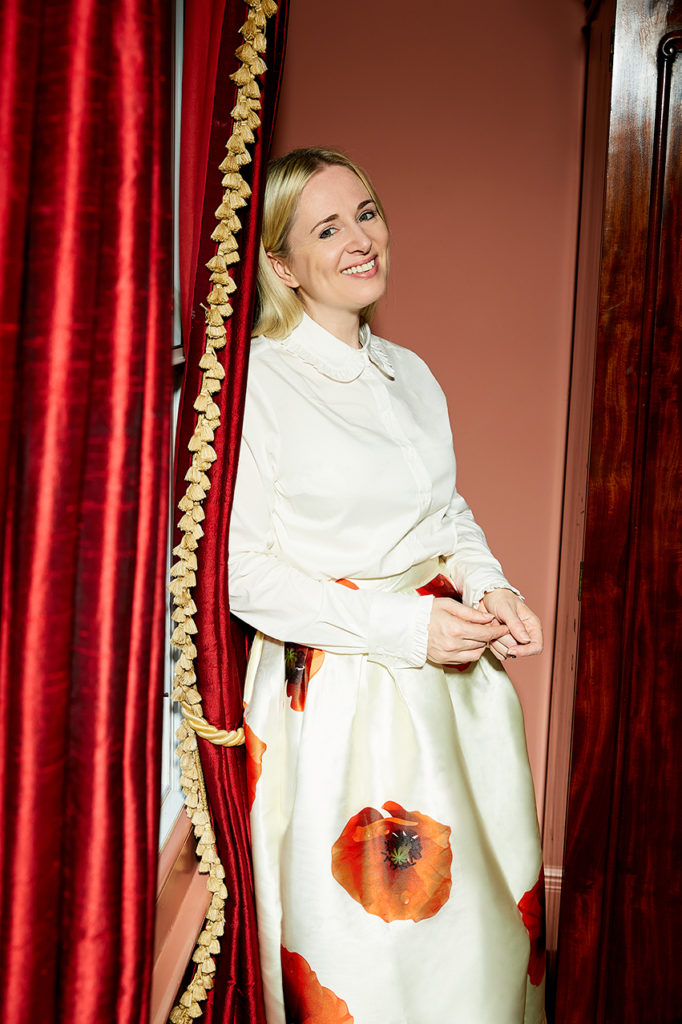
So, how did the idea for the academy come about? “It’s an extension of the podcast and was born out of feedback from listeners over the past four years,” explains Press. “They’re telling us that they want to upskill on sustainable fashion outside of full-time study or expensive professional development courses,” she continues, emphasising that acting like a university isn’t a part of the plan. Instead, there’s a real focus on putting something out into the world that’s not only educational, but also joyfully creative and highly original. “There are some great open-source MOOCs but they tend to focus on designers. What about everyone else? The onus has been on people to basically D.I.Y. – and that can be intimidating. Who’s got the time do all the research themselves and figure out what’s important and relevant, and what’s a trusted source? Wardrobe Crisis Academy does that for you.”
Along with guided study, audio presentations and weekly videos, students can expect stimulating journal prompts, special guest lecturers, live community calls, quizzes, workshops and even meditations, led by a fashion academic who doubles as a yoga and meditation teacher. “It’s all about mindfulness and connection,” says Press, when asked about the inclusion of the latter.
A sneak preview of the curriculum revealed that it (rather wonderfully) starts by gauging each individual’s interests, hopes and dreams, and that the mixed-media format is the result of endlessly tried, trialled and tested ways to present exercises to a beat that’s never dry or boring. “The magic is in how we do it,” enthuses Press, highlighting that over 40 lessons “with a lovely rhythm” cost the equivalent of the price of a night out. Sold.
Sustainable Fashion 101 is available for presale now from $55 USD/ €45.
Find all the course details at http://www.thewardrobecrisis.com
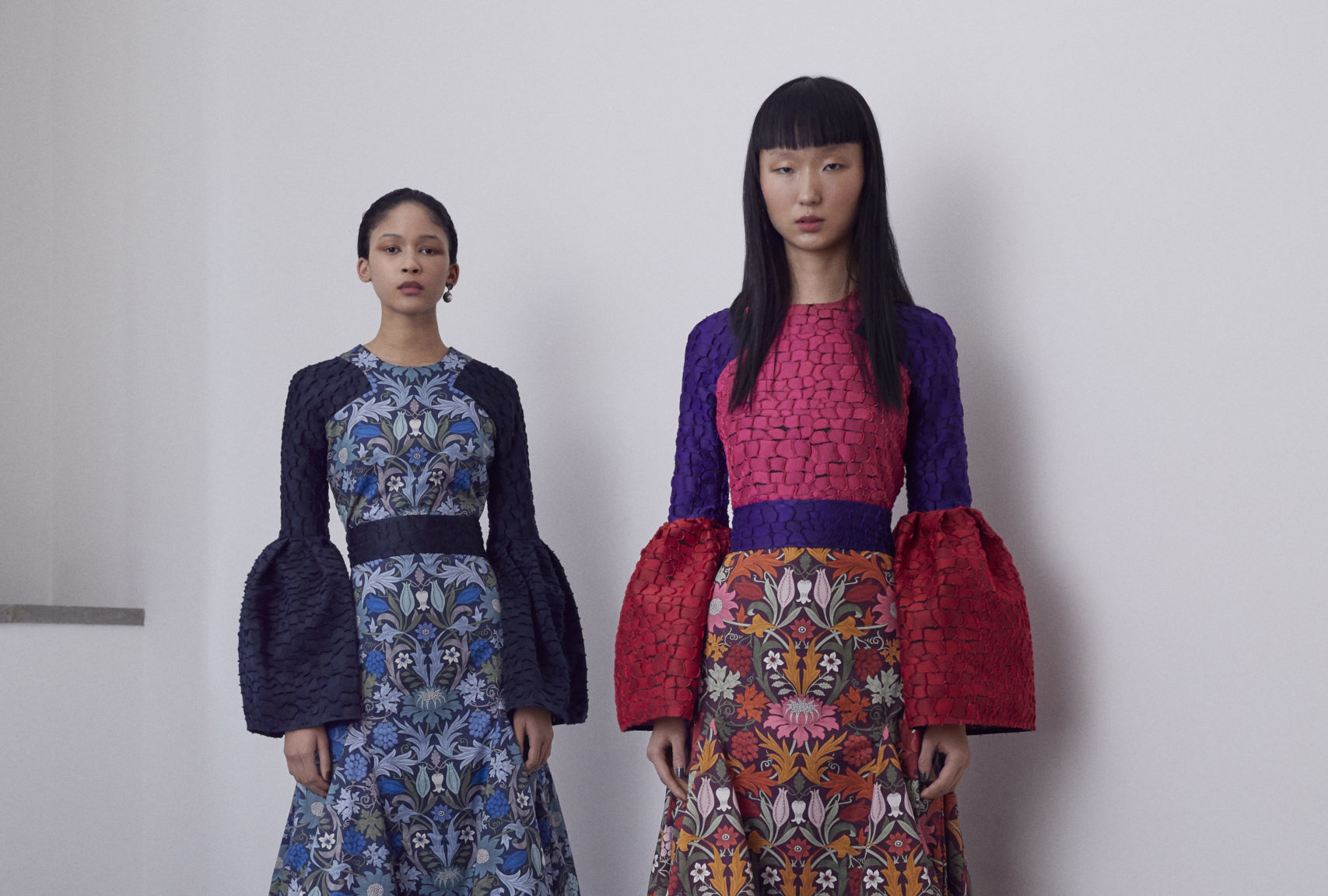
“We were starting to question the fashion system’s rigidness over seasonality,” explains Teatum over Zoom. “When you look at the face value of a material, it’s crazy to think that the value of that material is attached to a six month window, and once it’s outside of that window, you don’t like it anymore. It’s bonkers.” Until then, the pair had succumbed to the industry’s fervent demand for constant newness. They’d develop a range of new fabrics each season, many of which would never make it to the show or shop floor. “We’d have rolls of fabrics that we spent weeks developing and they were beautiful, but for whatever reason they weren’t right for the runway,” says Teatum. “We kept it all, but it was becoming a problem where we had these beautiful things, they’re just hiding away, but we’re creating new stuff,” agrees Jones. “When you start to open your eyes to what you have, you think: these are as beautiful as the other pieces, they just need a moment.”
Their second ReLove collection is made using 12 of Liberty’s deadstock archive fabrics that were deemed imperfect, and donations of unsold denim from Save The Children. These were fused with the brand’s own unused textiles to recreate a selection of Teatum Jones’ best-selling styles. But why not design a new collection around these fabrics? “We have an ethos: don’t throw away good design,” says Teatum. “For the first few years, we went hell for leather on designing collections because we were new and we fell prey to the buyers who were asking: what about newness? But we got to the point where we thought, this dress is amazing, it’s been amazing for the last four seasons. Why are we not working with it further?”
The brand has always taken inspiration from human stories, so it was an emotional connection to the communities they researched that pushed the brand to go seasonless. “We put a lot of development into our collections – one collection we looked into disability and we were getting to know a community, then suddenly February was around the corner and fashion week was telling you to put it on the catwalk and say goodbye to it,” says Jones.
Now, the brand drops collections that sit within a wider, ongoing exploration of a theme. “It’s about paying homage to the subjects we’re researching, but also doing the same thing to materials that come from that research,” says Teatum. “Because so much goes into developing the collections, there’s lots of emotional narrative that’s wrapped up in the design process, so we were paying respect to all of that.”
Slowing down their business and developing the ReLove initiative has also revived the team’s passion for the craft, says Jones. “It’s taken us back to our love of why we joined fashion when we first started,” he says. “Even compared to our college days, we’re much more hands on – we’re pulling out these fabrics, quilting and patchworking. It’s exciting, finding that love again. We’ve had the space and time to really focus on fashion as opposed to the treadmill [of the industry].”
Working solely with unused or unwanted textiles hasn’t been without obstacles, but the duo have never been ones to shy away from a challenge. “I think it forces you to be more creative,” says Teatum. “But it depends which way you look at it and what kind of person you are. You can look at it as [creatively] limiting, because there are limitations to dealing with small lengths of fabric and what you can do with them. Or you’re people like us who think: how can we make this even better than it was four seasons ago?”
If ever a brand could have been ready for the pandemic, it was Teatum Jones. Having already stepped back from the system, slowed production down and focused on seasonless design, their model was one that other brands were forced to adopt when COVID hit. “Everything shifted, and suddenly the idea of ‘we can’t change this system, it’s too big’ had to change,” says Jones. “There are designers who have been talking about what needed to change, but the pandemic forced everyone to stop and think about how we can do it in a better way. We thought it could be done before it was forced to, now I just hope the changes carry on and we push through with them instead of falling back into old thinking.”
As many brands grapple with how to rework unsold stock and design around the rolls of unused textiles sitting in their warehouses, Teatum and Jones hope that ReLove can act as a use case to prove that beautiful clothing can come from old or unwanted textiles. The key to success, they believe, is in collaboration. “When you partner with other brands, you introduce scalability, which is the one question that keeps getting thrown at us,” says Teatum. “It’s one way of answering that question, by bringing in partners like Liberty and Save the Children. You can do this on an industry-wide level, but it’s about partnering with multiple players who can bring awareness to the initiative.”
As for the future of the ReLove initiative, the pair are already in conversation with new collaborators to continue expanding their impact through creatively transforming waste textiles into timeless handcrafted collections. “ReLove depends on partnering with people who have the same belief in the concept, who can authentically work with us to create something beautiful that will sell,” says Teatum. “The more people you work with, the louder it gets, and the more that other designers and retailers realise that it’s possible.”
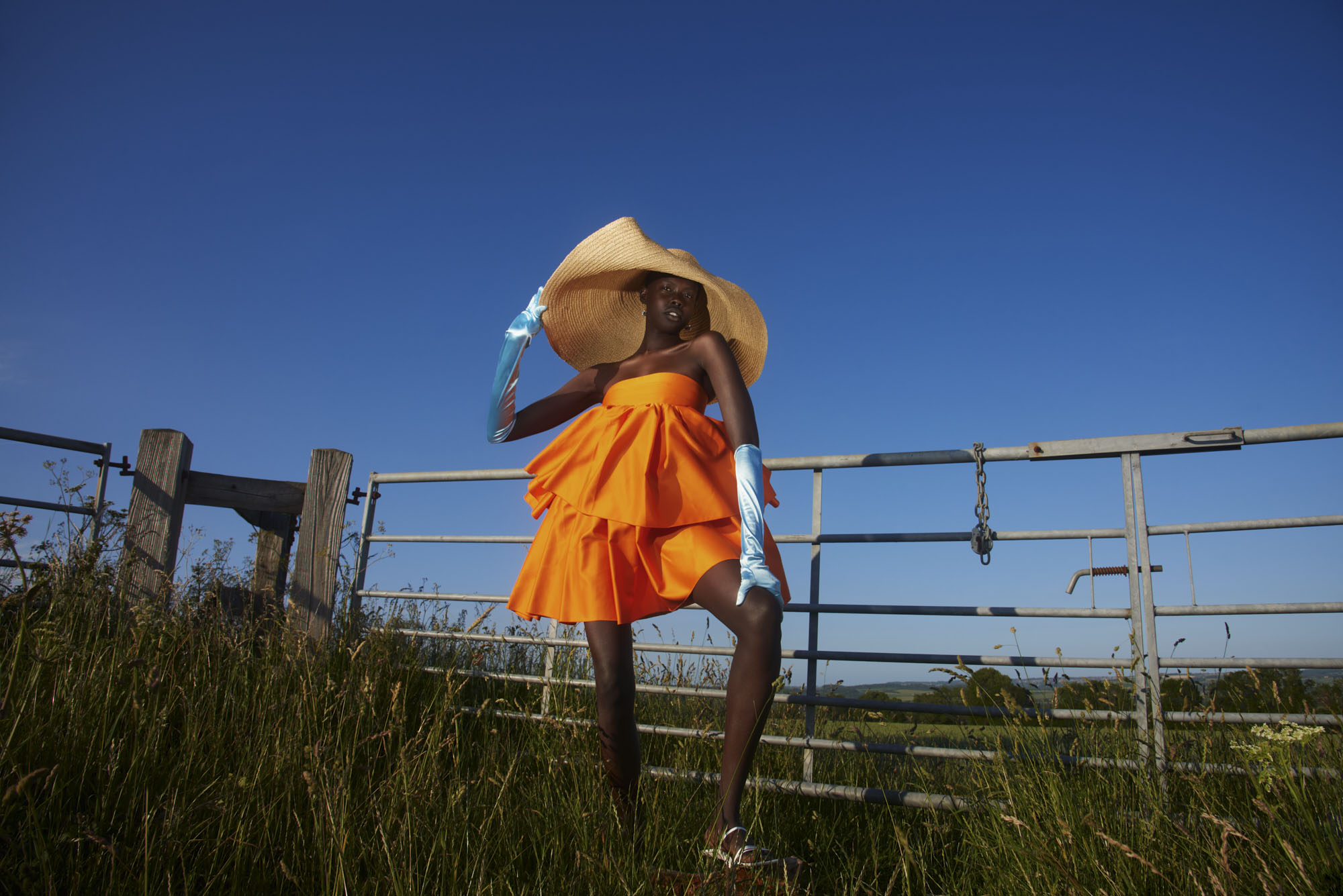

Rental platform Rotaro is on a mission to use fashion rental as a vehicle for wider industry reform. Founded in November 2019 by former WGSN trend analyst Georgie Hyatt and her partner Charlie Knowles, Rotaro’s ambitions go beyond just dressing young women in of-the-moment brands. “What we’re trying to do is re-engineer the whole fashion industry – it’s a very big task,” explains Hyatt over Zoom. “We’re trying to change the way people are getting dressed, to encourage people to buy less but buy better, and whenever they need something new, to come to rental.”
By offering pieces from much-hyped emerging, independent (but most importantly, conscious) brands like Cecilie Bahnsen, Cult Gaia, Jacquemus, House of Sunny and Stine Goya, Rotaro is taking an aesthetics-led approach to encouraging more sustainable consumption of fashion. “We found that in terms of marketing, sustainability as an educational piece isn’t enough, it can’t be your whole offering,” she says. “You need to have a lot of other reasons why people are going to come to you, and we found that accessibility to great brands at a lower price, as well as [encouraging] exploration of personal style, are big reasons.”

The trifecta of Rotaro’s price point, cult brand selection and an ethical ethos results in a customer base largely made up by Gen Z, who are keen to experiment with their style, but probably don’t have the budget to buy a £400 dress. “People really understand that what we’re offering is a platform to discover new brands or new styles and to push the envelope on your own style,” says Hyatt. “I think our Gen Z customers really enjoy that you can rent a metallic pink dress, even if they never want to own it or wear it more than once. Renting allows them to inject newness into their wardrobe.” Indeed, part of the platform’s success with Gen Z customers comes down to a shifting definition of “new” among a younger generation. “What’s great about them is that ‘new’ to them doesn’t mean it’s new out the box,” she says. “New to them just means it’s new in their lives.”
Beyond ensuring their partner brands are up to scratch, Rotaro is also embedding sustainable practices across its own operations. “A criticism of fashion rental is that it leaves a large carbon footprint,” says Hyatt. “So we want to make sure we eliminate as much of this footprint as possible. We’re working with a carbon neutral delivery service, and we use biodegradable and recycled packaging.” Hyatt says the Rotaro team are currently developing reusable bags to cut out single-use packaging altogether.
These earth-conscious decisions are important for a few reasons – not only to reduce Rotaro’s environmental impact, but to incentivise their customers through tangible rewards. “We’ve partnered with Ecologi to plant a tree for every single rental,” says Hyatt. “We want to have that positive reinforcement – every time someone rents something, they’re reminded that they’re doing something positive for the environment.”
So far, so good. But how exactly is Rotaro tackling the wider issues facing fashion? Here’s where things get really interesting. “We’re currently developing technology that will enable us to work directly with brands to help them make better product decisions.” To do this, Rotaro is tapping into their data to guide brands in the design phase. “We’re giving them qualitative and quantitative feedback as to who is renting their garments, why they’re renting them, the demographics, how the products have fared in the market, and then going one step further to make sustainable product recommendations,” says Hyatt. “The way I see us in the future is as a key facilitator to help brands develop better products and also to break down the barrier between brands and their circular economy customers.”

Launching a business is difficult, but launching one four months before a pandemic is something else. For two months of 2020, Rotaro used their logistics facility to send fruit and vegetable boxes to people in need. “We didn’t want to promote fashion rental because we thought it was insensitive,” says Hyatt. “There was an oversupply of vegetables from farmers that supplied closed restaurants, and there were people who couldn’t get online delivery slots, so we connected the two for a few months. It had nothing to do with fashion rental, but it felt very much part of our ethos.”
Rotaro pivoted back to fashion in the summer, and rental rates mimicked the peaks and troughs of various lockdowns throughout the year. “Every time we’ve seen an easing of lockdown there has been a surge in rentals. We had a really excellent festive period, even though we were in lockdown,” says Hyatt. “I think people were just making the most of small occasions, which I think was really cool. That’s very much what we’re about as a brand – celebrating life and bringing joy to people’s lives in a mindful way.”

In the long-run, Hyatt thinks the pandemic has actually accelerated the success of fashion rental platforms. “There was a lot of information [about consumption and greenwashing] being shared in our wider communities, and people have had the opportunity to reconsider their relationship with fashion,” she says. “They’ve had a wardrobe reset and I really think that people will be more mindful with their purchases going forward.”
However you’re choosing to ring in the aforementioned Roaring Twenties, Hyatt is keen for rental platforms like hers to be top of mind for people who plan on dressing to the nines at the earliest opportunity. “Fashion is such a form of self-expression and we’ve all been locked up wearing sweatpants for too long,” says Hyatt. “People are celebrating life through fashion, which is fantastic, and Rotaro will be there to help them make better decisions as they’re re-emerging into the new normal.”

The move has been criticised by many as yet another example of greenwashing, conveying misleading information about the brand’s sustainability credentials. As a leading high-street fast-fashion company H&M Group has contributed significantly to the issues of fast fashion in the UK and worldwide over the years. The UK website currently has 7209 items of women’s clothing, with volume of styles being a key indicator of fast-fashion brands. H&M Group has over 2000 factories worldwide producing billions of garments a year, and has previously been called out for burning unsold stock, to the extent that power plant Vasteras could become temporarily fossil-fuel free, purely by burning H&M clothing. In 2019 it had an inventory of $4bn (£2.91bn) unsold clothes, each requiring huge amounts of resources and labour to create, but never being sold or worn.
Let’s talk about sustainability. As a brand, H&M could be seen as leading the way in moving to a more sustainable business model, at least in terms of fast fashion. Surprisingly, the group received 73 out of 100 points in Fashion Revolution’s Transparency Index, although of course, being transparent about your policies and practises doesn’t say anything about how good they actually are. H&M Group has committed to using 30% recycled materials and reducing emissions by 20% by 2025. The brand offers £5 vouchers for customers bringing in clothes for recycling (which could more cynically be seen as a clever tool to get higher footfall and increase spending on new items in store), and was one of the first high-street brands to launch a ‘conscious collection’. This does beg the question that if 5% of their collection is ‘conscious’ or ‘sustainable’, what does that make the remaining 95%?
Superficially, H&M seems to be saying all the right things, and making all the right moves, albeit slowly. If you’re not looking too deep, it can be tempting to believe that fast-fashion brands making efforts to improve their green credentials are a viable solution to ‘conscious consumerism’. You can have your new dress and wear it.
Look a little deeper, however, and cracks begin to show. Many of the claims H&M (and other fast-fashion brands) make are not only unsubstantiated, but impossible to ever verify. ‘Eco-friendly’, ‘conscious’ and ‘sustainable’ really mean very little, if anything. The unreliability of their sustainability claims is evidenced by the below statement by their current CEO (previous Head of Sustainability) Helena Helmersson about the sustainability and ethical guarantees the company offers:
“I don’t think guarantee is the right word…A lot of people ask for guarantees: ‘Can you guarantee labour conditions? Can you guarantee zero chemicals?’ Of course we cannot when we’re such a huge company operating in very challenging conditions”.
And therein lies the issue. While H&M and other high-street fashion brands move towards materials that have less environmental impact, their entire business model (selling high volumes of clothes cheaply) means they cannot possibly guarantee that they’re having any any less of a negative impact at all. They don’t even know what is happening in their factories. Without addressing the entire fast fashion business model, it is dubious that high-street brands such as H&M could ever be sustainable.
Alongside this, there is the issue of ethics. Following the Rana Plaza disaster of 2013, H&M joined the Bangladesh Fire Safety Accord to address health and safety issues in factories. H&M promised to pay their workers a living wage by 2018, a target which they spectacularly failed to meet, and have made no notable efforts to improve wages since. With much of their clothing selling for under £10, it is impossible for workers to be being paid wages that allow them to live a decent life. The issue becomes all the more stark when considering the amount celebrity endorsers, such as Maisie Williams, get paid to be the face of a brand such as H&M. When celebrities are getting paid in the millions for promoting a ‘sustainable range’ in lieu of garment workers getting paid fair wages, it’s hard to consider the range sustainable at all. As a large brand, H&M holds clout with its 2000+ factories. Insisting on living wage would send an important message to the industry and raise the standard for all, but instead, these brands are all too happy to channel these funds into increased marketing to sell yet more clothing, and the cycle continues.
When you consider the ethics of making sustainability claims that cannot ever be substantiated, many would argue that sustainability and ethics go hand in hand. Misleading well-intentioned customers in an effort to sell more clothes is anything but ethical.
Sustainability and ethics are also intrinsically linked when looking at those most affected by climate change. Companies doing the most damage (such as fast-fashion brands) are not only outsourcing labour to the Global South, but also outsourcing damage. Toxic dyes, polluted waterways, horrendous farming conditions all impact the workers as well as the environment, so it is impossible to uncouple the two elements of a clothing brand. While profits, shareholders and celebrity endorsers are continually placed ahead of suppliers, factory workers and the environment, no fast fashion brand can ever be deemed truly sustainable. We need system change, not fabric change. It is impossible to separate the dubious ethics and unthinkable volume of clothes intrinsic to the fast-fashion business model, from the more ‘environmentally friendly’ fabric choices in their ‘conscious collections’. Sustainability and ethics go hand in hand. Leave one behind, and you’re left with a green façade of sustainability, ready to be broken down once fashion changes.

To produce smooth, drapey fabrics such as viscose, rayon, modal and lyocell, forests are used in the manufacture of dissolving pulp (the chemically intensive process that happens before the man-made cellulosic fibre is spun into thread) and the demand for these textiles is growing – in fact, it’s estimated that the fashion industry logs around 200 million trees every year (according to the latest update) to produce cellulosic textiles. Conscious consumers who are concerned about climate change will recognise the link between management and the preservation of forests. Yet, while there’s an expectation for products to be made with responsibly sourced materials, this isn’t always the case. As it’s stated on Stella McCartney’s website, “managing forests sustainably means using them in a way that maintains their productivity, biodiversity and regeneration capacity, as well as ensuring they can meet society’s needs now and in the future.” Good sustainable forestry practices are where the CanopyStyle initiative and the Forest Stewardship Council (FSC) come into play.
CanopyStyle is creating real, impactful change. While there remains work to be done when it comes to curbing the sheer number of trees going into fabric each year (#solutionsaresexy – could agricultural straw be the answer?), over 330 brands and designers have committed to the initiative and are working to eliminate the use of ancient and endangered forest in their supply chain.
The Forest Stewardship Council is described as the world’s most credible solution for sustainable forest management, providing assurance of responsible sourcing.
TENCEL™ Lyocell and Modal are certified bio-based fibres that are manufactured using a more environmentally responsible production process. Able to fully revert back to nature, the fibres are certified as compostable and biodegradable. Plus, TENCEL™ Lyocell uses a low-toxicity solvent and the majority of the chemicals are reused in a closed-loop system.
ENKA® sources Domsjö´s FSC® certified cellulose from a Swedish biorefinery, which fully originates from local, legal and sustainable forestation in Northern Europe. What’s more, ENKA® Viscose has received the Cradle to Cradle Product Innovation Institute’s Gold level Material Health Certificate.
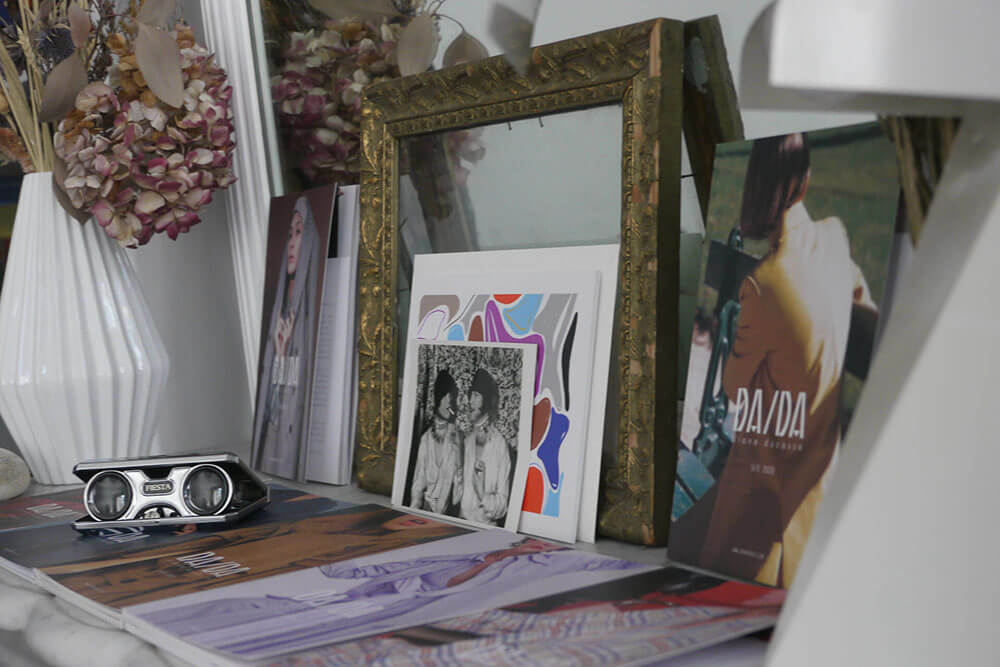
Since 2016, the young Parisian with a heart from Biarritz has taken on the challenge of adapting the men’s wardrobe to women. Her latest collection for spring 2021, celebrates this DNA at the border of genders. With a necessary freshness, her clothes are so beautiful that you never want to leave them. Between comfort and reassurance, the collection soothes the mind and sublimates the body. From her obsession with suits and Margiela to her commitment to eco-responsibility, Diane Ducasse is a fascinating and passionate character. In an interview, COVID friendly via Zoom, she shares with us her journey, her desires and her vision of a fashion that is rich in colour and hungry for creativity.
I took the plunge six years ago. I had never really thought about starting my own brand but I had been freelancing for several years and it had become complicated to fit into the DNA of the houses I was working for. As a stylist/model, I wanted to respond to my own desires, while proving to myself what I was worth.
I started at the Studio Berçot where I learned the basics of couture and fashion. Then I trained with Michel Vivien, the designer Vincent Darré and Inès de la Fressange, whom I assisted with her collaborations. My entire career has enriched me with inspirations, colours, references and techniques. I was lucky enough to be surrounded by real businessmen and women who also gave me the desire to start my own business.
A brand that revisits the codes of men’s clothing for women. A brand that celebrates the structure of a fitted tailoring, the delicacy of a pair of trousers with clips, the allure of a shirt that’s a little too big. DA/DA is about that, but it’s also about prints, unexpected combinations, and joy. Although I’ve been obsessed with uniforms since I was a little girl, I wanted to imagine them in my own way, bright, transcending women through the richness of their colours.
I couldn’t say where it came from, but I remember that I used to get my mother to put me in a school that required a uniform. I thought it was extremely elegant, I also liked the obligation that encouraged you to be even more creative. Unfortunately uniforms in France were not very common, my only solution was to enter a boarding school but I was still too young for this kind of independence.
I think it’s all in DA/DA, a creativity with a hint of surrealism, a nod to Dadaism and a duality without limits between genres and styles. That’s how I would define my style. I like basic but not classic. I want suits but nothing formal. I’ve always dressed that way, I just found a way to materialize my ideas by making my own clothes.
I have always been close to nature. As soon as I can, I join my mother who lives in Biarritz with my sister. I have always been surrounded by strong, independent, instinctive women. These lionesses, as I like to call them, have always pushed me to listen to myself and follow my ideas. For my brand, I always knew that I wanted to create something timeless. Pieces that stay and are passed on. Without really knowing it, this commitment has pushed me towards the path of rational consumption. In my opinion, this means buying less but also buying better. I have therefore taken the time to source each of my fabrics in Italy, England and France.
It’s essential and goes hand in hand with beautiful fabrics. It’s inconceivable to me that beautiful fabrics could be ruined with approximate techniques, based on yield. I wanted to take my time, to check every cut and finish in great detail.
For my first autumn-winter 2016 collection, I went through workshops in Portugal but I brought everything back to France and more precisely to Paris from the second. I wanted to promote the incredible French craftmanship while keeping an eye on my production and a reasonable carbon footprint. I do everything myself, so I also needed a convenient location that didn’t hold me back from all the other hats imposed by entrepreneurship.
At first I tried to fit in with this seasonality but I quickly realised that my independence would suffer. I took back control of my collections, which I distilled each week according to colour, material and atmosphere themes.
The materials are colourful and sunny. After months of being cooped up, I was more than ever in the mood for nature and the outdoors. The Covid also inspired me to be more comfortable and practical. Pegged trousers have elasticated waists, dresses are made into dressing gowns with silk inserts and oversized shirts are airy with draped textures.
At school or at Studio Berçot I never looked at magazines.
My eye was instinctively enriched by the shows of Dries Van Noten and his multicoloured prints, Yves Saint Laurent and his contemporary suits and of course Yoji Yamamoto and Martin Margiela for their work on the destructuring of basics. I also keep in mind the story of Gabrielle Chanel, a strong and dynamic woman who allowed women to wear trousers and to emancipate themselves from a clichéd fashion.
To diversify my offer even more. I was lucky enough to collaborate with Monoprix a few weeks ago where I was able to express my creativity through a hybrid collection for women, children and the home. I have always had a particular sensitivity for design and I loved being able to express it through my own objects. More than a brand, I want to continue creating a DA/DA universe. As far as clothing is concerned, I am currently concentrating on knitwear, T-shirts and sweatshirts, but I would very quickly like to move on to accessories, particularly scarves.

It’s been well documented over the last decade that diamonds (as well as gold and other popular jewellery products), are in fact, definitely not our best friends – despite the overused statement attempting to tell us differently.
Over the last few centuries, even up to today’s world, it’s rare that people understand the origins of their gemstones. Passing through the hands of multiple dealers, merchants and countries, it’s an industry that has always been known for being impervious and murky. With so much of the production reliant upon natural products and mining for materials, the environmental impact is treacherous.
Of course, it is not only problematic when it comes to the environment. Unfortunately, the jewellery industry, and diamonds in particular, has been linked to corruption and unethical behaviour for centuries. In fact, according to a report by the Yale School of the Environment, ‘it’s estimated that at least 60% of mined diamonds sold in the U.S have problematic ties to military governments and corruption.’
Transparent and ethical sourcing, as well as low energy usage and using sustainable materials, is all at the centre of a sustainable and environmentally friendly jewellery industry. Sustainability, in its truest form, needs to be approached holistically, as well as with the product. Similarly, while people’s habits don’t change and the population continues to want things that are ultimately bad for the environment, little change is going to happen.
There has, however, over the last two years, been a turning point in the approach to jewellery consumption and creation. At the centre of this positive progression is the fact that so many creative players are campaigning for change and development. Innovation and pioneering attempts at disrupting and catapulting the industry forwards have completely transformed the sustainable outlook of the future.
One such company that’s truly pushing boundaries is actively changing the shape of the future. Say hello to Aether, the world’s first carbon-negative and truly sustainable diamonds: alchemized from air and handset in fair-mined gold. Founded by climate-change campaigner and mechanical engineer Ryan Shearman, Aether is a luxury jewelry company with a paradigm-shifting vision. The jewellery pushes the boundaries of design, technology, and craftsmanship in order to pave the way for a more beautiful, honest, and enduring world.
Made from air, the diamonds created by the company are certified by the International Gemological Institute and are held to the same standards as mined diamonds. Naturally, due to their world-first status, the Aether stones are the most rare you can buy and, as it stands, their quality is among the top 2% of all diamonds on the planet.
What’s pertinent, too, is the notion that they have created something that can affect change for good, but without people having to change their habits. Instead, the company is creating an altogether new solution. They’ve recognised that people will still buy jewellery, and have created something that positively impacts through the production techniques.
It’s true that there are other big companies making brilliant moves in the lab-grown jewellery world, but other lab-grown diamond brands still source their carbon from fossil fuels. With a lack of transparency in the lab-grown industry, and blatant green washing happening every day, it’s generally pretty hard for a consumer to see through the marketing messages and ‘facts’.
That’s where Aether has really changed the story (and, the happy ending). They are proudly aboveground, meaning nothing is drilled or dug, and nothing harms the planet. ‘Amid global climate change and all of the other challenges 2020 has brought with it, we believe there is currently great opportunity for high-minded doers to step in and help shape the future,’ says Ryan. ‘Now more than ever, forces for true and lasting change are coalescing to transform our world into one where massive positive advancements for humanity and the planet are truly possible.’
After years and years of research, invention and blood, sweat and tears, the company came up with the protected technology to alchemize diamonds from air pollution. So, how does it work, exactly? In simple terms, the process happens across four stages.
Firstly, atmospheric collectors pull carbon dioxide air pollution straight out of the sky. As the air is drawn in, the CO2 collects in specialized filters. This captured CO2 is then synthesized into a usable hydrocarbon raw material, perfect for growing diamonds. From here, the hydrocarbon raw materials are placed into powerful reactors that create the perfect environment for growing a diamond. The diamonds grow fractal by fractal as the carbon atoms align into crystalline form. Aether sends the rough diamonds to cutters and polishers who help the diamonds achieve peak perfection.

Amazingly, each carat removes approximately 20 tonnes of carbon out of the sky. When you consider that the average person in the UK has an annual carbon footprint of 12.7 tonnes and in the US, 16 tonnes, buying a 2-carat diamond offsets a huge amount of carbon.
It’s exactly this type of change that young consumers want to see. In fact, according to a recent article by Matter of Form: ‘Ethical transparency around jewellery production is critical now, especially among millennials, who favour products and businesses that have a conscience. The 4 Cs will no longer cut it –– millennials want to be assured that what they are buying has not had a negative impact on humans or the environment. The provenance of the stone is key.’
Aether is proud to be a part of this idea of change for good. ‘Creating the world’s first positive-impact diamonds is just the beginning, and we are committed to becoming an independently carbon-negative company by 2023,’ Ryan continues.
‘We’re actively building a future where we generate our own renewable energy sources, returning excess clean power to the grid. Until then, offsets neutralize our operational impact as a whole, and help shift the industry from old power to new.’
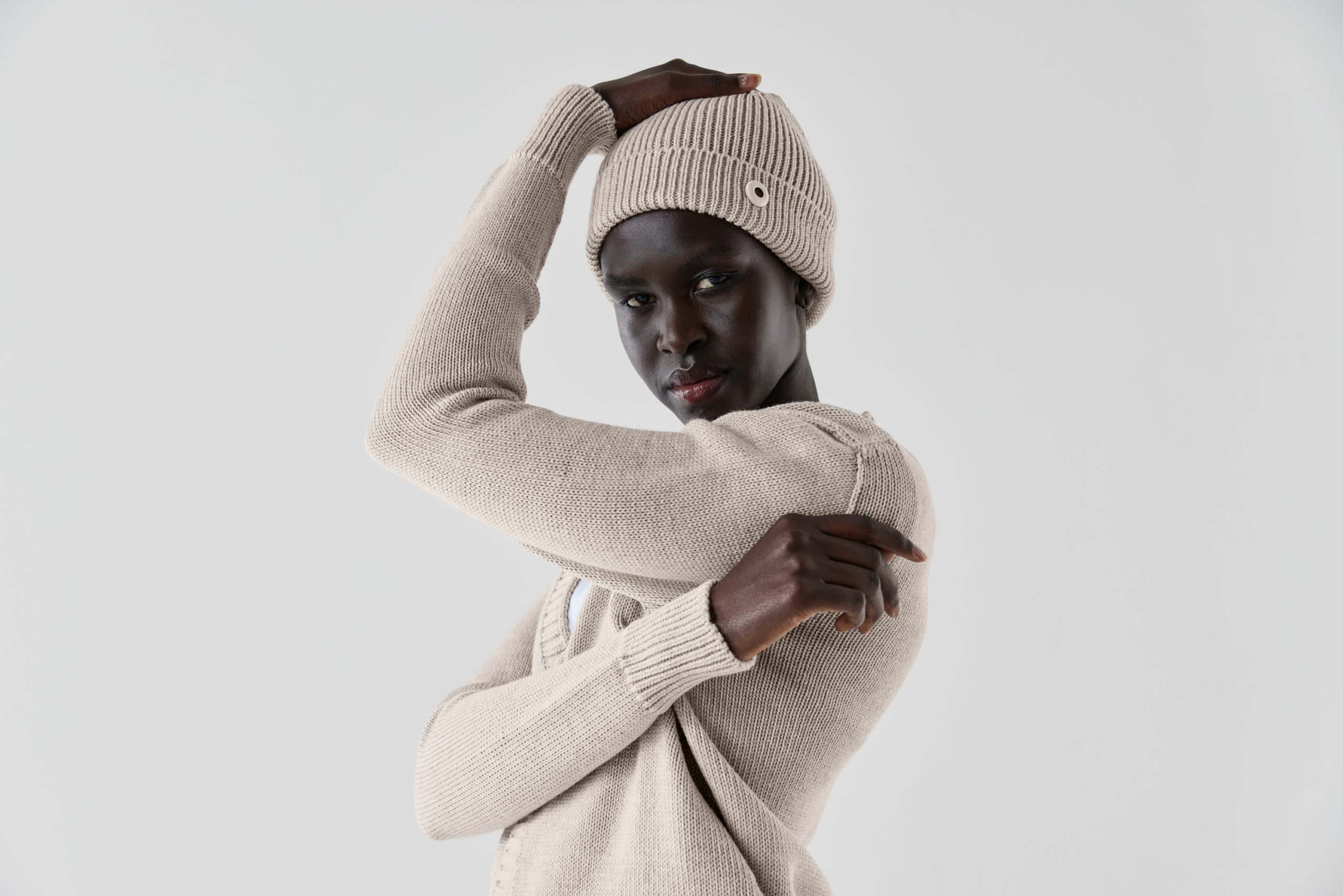
By drawing a direct line between the origin and the end product, the London-based knitwear brand is taking a novel approach to traceability, with the aim to ignite a deeper emotional connection to clothing. “We want people to understand that what they’re wearing comes from nature, and to remind them that it’s out there,” explains Alexander Lewis, head of design at Sheep Inc. After you buy Sheep Inc. jumper, you can adopt and name your sheep, watch it meander around a paddock and learn more about the brand’s supply chain from sheep to sweater. But how?
Every Sheep Inc. garment has a small circular NFC (near-field communication) tag attached to the bottom hem, which can be scanned using your phone. “The NFC tag is a design decision linked to the tags sheep have on their ears,” says Lewis. It’s become somewhat of a signature design detail for the brand, although the tag initially caused some confusion. “In the very beginning [October, 2019], the tags were our brand yellow, which is super bright,” says Lewis. “But we had people asking us if it was a security tag, or they thought that colour yellow meant it was hazardous in some way.” These days, though consumers are becoming increasingly familiar with tech woven into their clothing, the NFC tags tonally match the colour of the jumper, and are made from snap buttons for easy removal.
When it comes to educating consumers, NFC tags provide Sheep inc. with an opportunity to talk about their supply chains in an accessible and engaging way. It also allows the brand to explain certain sourcing decisions, like why their wool isn’t farmed closer to home. “We only use Merino wool that we source from three specific farms in New Zealand because they’re regenerative and carbon negative or neutral,” says Lewis. “There’s no farming here like there is in New Zealand, we can’t replicate that,” says Lewis. “You can see in our supply chain where the most carbon emissions come from, and it’s the farm. That’s why we have to work with farms that are regenerative, so that they’re not letting out all this Co2 without any recourse.” From New Zealand, the wool travels to Italy, where it’s spun into yarn by a mill run entirely on renewable energy, then manufactured using zero-waste knitting machines in Portugal.

“It’s not unusual to have sustainability rear its head around every thought process,” says Lewis. But does working to such strict eco-criteria feel creatively limiting? “I think you actually have more opportunity for creativity when you have strict guidelines because you have to really hunt for the solution, and you’re more creative about it,” he says. “The constraints of designing in a sustainably minded way are actually more interesting.”
Currently, the Sheep Inc. range is made up of six styles – four jumper styles, a cardigan and newly released beanie. This pared-back offering is due to the brand’s less-is-more ethos, an approach that has felt counterintuitive at times for Lewis, who has worked in the fashion industry for the better part of 15 years. “We’ve had to remind ourselves that there’s no need for us to bring out five new styles this season, we can just add one new style that adds to the collection instead of diluting it,” he says. “It’s a slower approach – if this was a fashion brand on [the fashion week] schedule, there would be more concern about getting things done on time. If something isn’t ready, we’re not going to be released, so it’s a much more sustainable approach to working.”

Since it’s inception, Sheep Inc. has been trying to create a truly genderless brand, but they’ve grappled with the complexities of garment construction. “There’s this cerebral notion of trying to create a genderless garment. At the end of the day, it ends up being a boyfriend fit, which is still gendered, so it’s a complicated space within fashion,” says Lewis. “Sizing and size inclusion is a really big frontier, and although we’re probably not going to be the ones to crack the code, or even shift the needle, it’s important for us to be hyper-aware.”
At only two years old, the brand is fast-moving and constantly looking to the future of fashion. With the potential for lab-grown leather and cotton to replace their natural counterparts on the horizon, it’s no surprise that Sheep Inc. have already started exploring the world of lab-grown alternatives to eventually replace Merino wool. “We’re discussing a shift from Sheep Included to becoming Sheep Excluded, and we’re definitely working on it,” says Lewis. “We’re looking at how to work with biopolymers and lab-grown wool, but it’s difficult to say we’re going to shift from 100 percent natural to 100 percent synthetic wool, it’d be incrementally done with blends.
Even the research and development process of making a sweater is long and drawn out, but when you start getting into something that’s at the frontier, there is so much unknown.”

From innovative new materials to traceability tech, Sheep Inc. really are at the forefront of a new wave of sustainably minded, forward-thinking fashion brands offering eco-credentials that they can back up. Lewis predicts it won’t be long before bigger brands jump on the bandwagon. “People have different visions of what qualifies as having “made it” and I think it’s when you’re knocked off by a bigger brand,” he says. “In a weird way, if a business came along and made all this fan-fare about how they were doing what we’re already doing, but as though they’re the first, that’s actually a really good feeling. It means we’ve done something right, and that’s wonderful.”
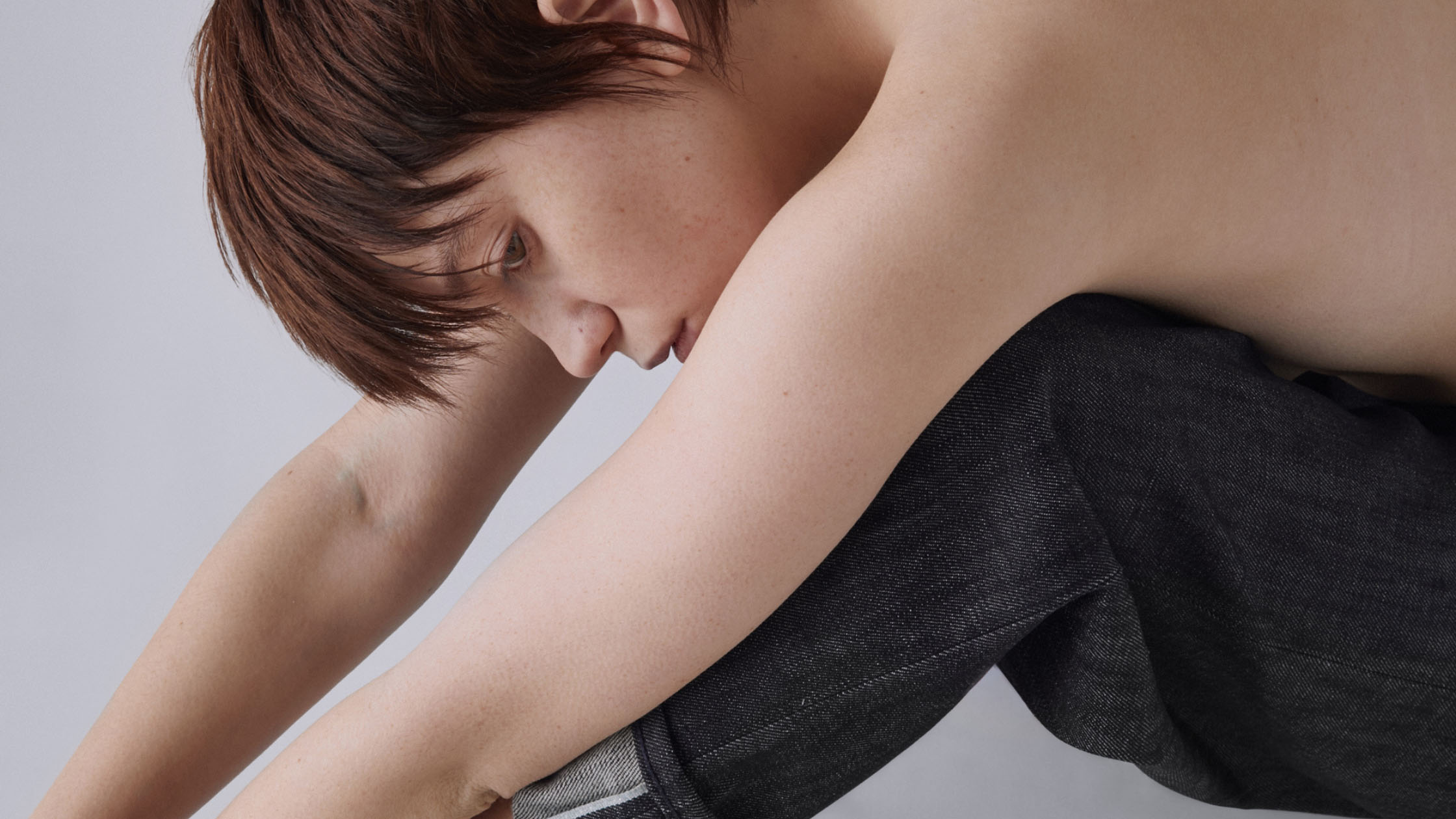
Denim is notoriously unsustainable. It uses vast amounts of water in production (7,000 litres of water per pair, to be precise), the dyes that give our jeans colour leach chemicals into the natural environment, and denim distressing processes like sandblasting can be incredibly dangerous to human health. Not to mention the forced labour practices found in cotton farming hubs like China, Uzbekistan and India.
So how do you build an environmentally conscious denim brand from the ground up, with all these factors to contend with? It’s a question that Pete Hellyer asked himself last year, when the pandemic put on hold his work as a freelance creative director.
“I suddenly found myself with a lot of time and a real awareness that I was very reliant on other people to get by, which felt a little scary,” says Hellyer, who has previously held roles as the creative director at e-commerce platforms Ssense and The Outnet. “I live in denim and white t-shirts, and I wanted to buy a new pair of jeans, probably to cheer myself up,” he says. “I was looking for a sustainable pair and I could only really find ones that were more heritage in their styling — that Levi’s aesthetic — and that’s not me.” What began as a spot of retail therapy quickly became a business idea and a year later, he’s just launched his ethical agender denim brand, non.
Consisting of three cuts of jeans, a jacket, overshirt, bucket hat and tote bag in three different denim washes, the first collection is pared back and unfussy, offering wardrobe staples that Hellyer hopes will speak for themselves. “It’s a wardrobe of core essentials that you need,” he says. “We’re not going to have trend-led pieces. I was inspired by that quote [by Li Edelkoort, an influential dutch trend forecaster] when she said: ‘Fashion is dead. Long live clothing.’”
non is “conscious by design”, partnering with leading sustainable denim producer ISKO to create a signature selvedge denim made from 50% organic cotton and 50% recycled cotton. Every detail down to the choice of zippers, buttons and threads has been chosen with the entire life cycle of the product in mind. Even still, Hellyer is honest about the downfalls of bringing more new clothing into a textile saturated world. “It’s difficult to be a sustainable brand within a system that’s inherently unsustainable,” he says. “I identify the brand as conscious by design, and that really is me trying to be aware and conscious of every decision that we make — our impact, the positive things that we’re doing, some of the negative aspects of what we’re doing, and being honest about that.”
Transparency is key for Hellyer, who is keen to make information as clear and accessible as possible for his potential customers. To do so, he’s dedicated a page of the brand’s website to naming everything from the origins of the hardware to the factory that manufactures his jeans. “When I went freelance, I started working with a couple of sustainable brands and I found all the labels really confusing,” he explains. “I felt like I suddenly was learning a new language. So I thought if I’m confused, as somebody who has worked in the industry for 15 years, customers must be befuddled.”
Using selvedge denim (which is considered superior to raw denim in terms of durability) was a decision that posed an ethical dilemma of its own. “I wanted to use 100% recycled cotton, but when you recycle cotton, you lower the fibre length, which reduces the strength, which reduces the quality,” says Hellyer. “I have tried to find that tipping point of having the best credentials, but also make a product that would last more than a few years, because if something can last a long time, then it’s inherently more sustainable.”
Hellyer has considered the full life cycle of a pair of non jeans just as much as the manufacturing process. Partnering with EON, a fashion tech company that tags clothing using an NFC tag, allowing him to share more information about the product with customers. Hellyer is planning to offer everything from information about the materials, to where to get your jeans repaired and how they can be recycled, as EON’s technology becomes more sophisticated and widely used. “I think it’s important to have greater responsibility for the item once we’ve made it,” says Hellyer. “That includes helping the customer look after their jeans and helping the jeans to be recycled at the end. I think it’s a big problem that brands make clothes, and then they don’t care.”
Sizing agender denim wear has thrown up a number of challenges for Hellyer, not just for the fact that men and women tend to have very different body shapes. “The thing with unisex and agender clothing is, how do you size them in a way that all people understand, that isn’t gendered?” he asks. “We’ve really put time into making inclusive names and sizing. With the jeans, I didn’t want to call them wide leg or loose leg, because it might not be loose on a larger person in the same way that straight will not necessarily be a slim fit on everyone.” The jeans range from size 25 to 36, and the website has detailed sizing information to help reduce returns. “Most online return rates are really high, and that’s such a waste of shipping and carbon footprint,” he says. “So we want to encourage people to actually measure themselves for their jeans.”
With non’s first collection stocked at Ssense, as well as independent boutiques like The Wasted Hour in Hamburg, Beamhill in Helsinki, Never Never in Belfast, plus a handful of others, what’s on the cards for the next few seasons? “Multi-functionality and modularity are things I’m really interested in,” says Hellyer. “I want to explore different ways to wear things, like reversible jackets and detachable sleeves, so you can wear it as a vest in the summer and as a jacket in the winter. If you can wear it all year round in different ways, it means you only need one jacket instead of two, or three, or four of them.”
For now, perhaps the brand’s biggest challenge will be convincing customers to swap their well-worn pandemic joggers for a pair of jeans as lockdown in the UK begins to ease, but he’s hoping that a denim revival is on the horizon. “Denim isn’t very cool at the moment,” he concedes. “Everyone lives in sweats because of lockdown, but I hope that once a sense of normality returns, that sense of dressing up is going to return too.”
Far from just another lockdown project, non is the result of 15 years industry experience combined with a drive to rewrite the rulebook on denim and offer a more sustainable, conscious way forward.
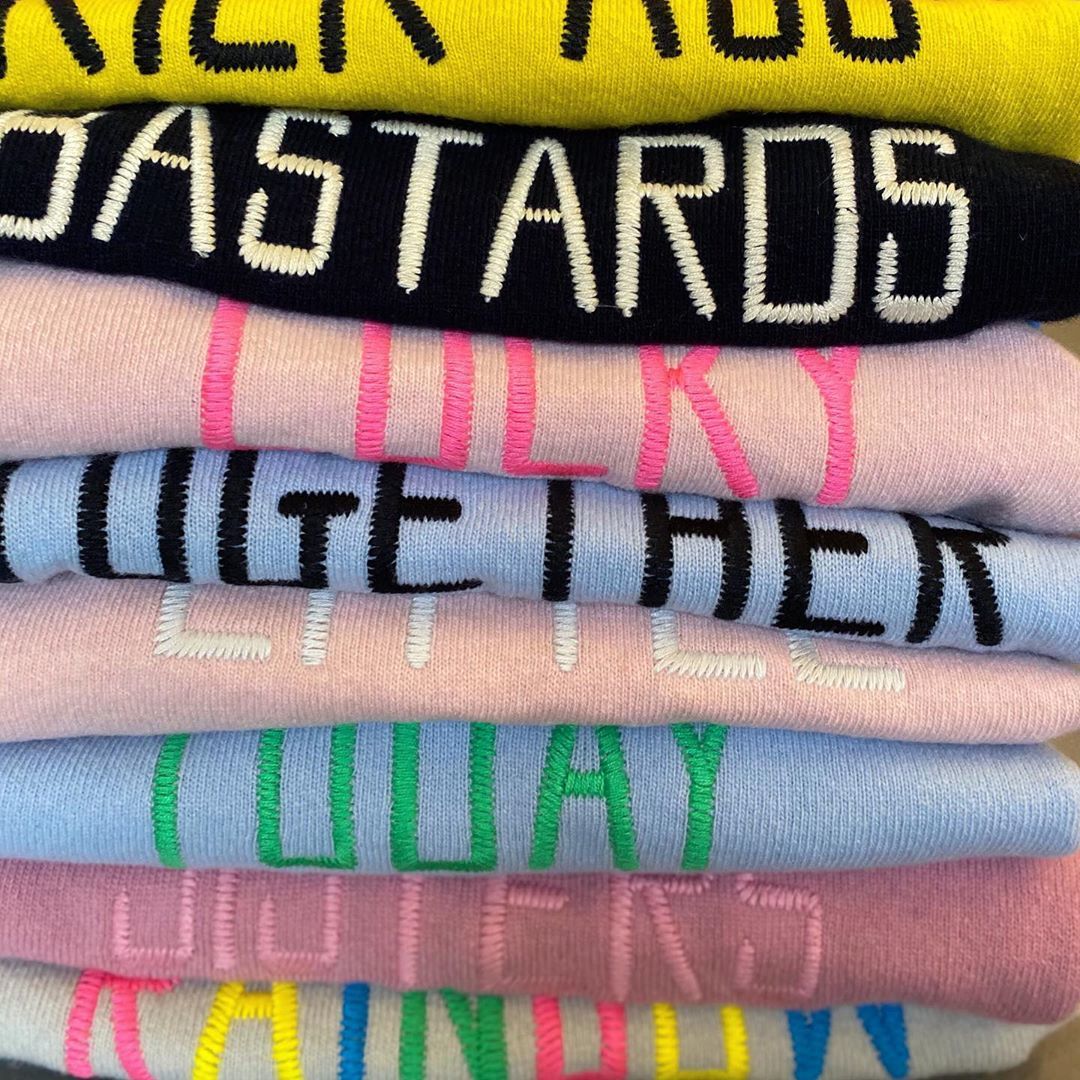
When I was 18 months old my family moved to a remote region of southern Africa, my dad was a geologist and I often rode out with him into the desert.
I was only part of that world for a short while as we moved back to England when I was seven, but living in a small African community had a profound effect on me. I saw that the children there had so little, I saw how much they loved school because, for many, it was the only meal they would eat all day. When we moved back to England we lived in Northamptonshire and my father worked in recycling. My sister, brother and I had a very happy childhood.
Before heading to university I wanted to go and explore the world so I went travelling with friends and then taught English for a year in a very poor region of Nepal. Once again I became inspired by the beauty and enthusiasm of the children there. During that time I decided that whatever my business would be it would involve providing school meals to children in poverty. School meals provide much more than daily sustenance; they provide children with opportunities that empower them to strive for a better future for themselves, their communities and the world. So the mission of FUND came first.
Yes, I have always been amazed at the ‘waste’ culture we live in. Using jumpers as an example – on average consumers only keep and wear a jumper for a couple of years which is very unsustainable. The reason for this is largely down to the quality of the knitwear.
Most items of clothing contain synthetic fibres which gradually break down during the washing process so that over time the item loses its shape and softness. These tiny microplastics then get washed into our seas and oceans causing untold damage. Sadly the fashion industry is one of the major polluting industries in the world. The textile industry is the second greatest polluter of local freshwater in the world and is culpable for roughly one-fifth of all industrial water pollution. Some of the main factors that contribute to this industrial caused pollution are the vast overproduction of fashion items, the use of synthetic fibres and the agricultural pollution of fashion crops. We haven’t got time to sit and be scared by the current situation, we’ve got to be positive, hopeful and innovate so we can bring about change.
At FUND all our knitwear and packaging is 100% plastic-free, we only work with wool which is a low impact, biodegradable fibre so we feel we are providing a good example for other businesses to follow.
I am a big fan of sustainable fashion and so try to seek out brands that I feel a personal affinity to that have a story behind their creation and processes. I wear lots of dresses and one of my favourite fashion brands is called Christy Dawn. They make the most beautiful dresses out of dead stock.
Many of the larger fashion brands order in vast swathes of fabric, for a certain dress or skirt style which ends up being discontinued and the fabric is then wasted. Christy Dawn buy up this beautiful fabric and upcycle it into vintage style dresses and one-off pieces.
My sister is a fashion designer and I follow the creative development of brands such as Gucci and Vivienne Westwood however, personally, I try not to be governed by trends. Instead, I like to purchase items that are beautiful, interesting or timeless in their own right
I like clothing from all eras – I have pieces in my wardrobe that have been passed down from my mum and grandmother, along with other vintage pieces I’ve sourced myself. I wear a lot of dresses, mostly in colourful prints and I often wear these with my jumpers. I like small interesting brands who make things well, so they last a long time. I try not to buy anything synthetic if I can help it. I also really love crazy trainers and ‘80s-style wool socks pulled up over my jeans. Basically anything colourful or different! The most beautiful thing I own is an Alice Temperley floor-length dress embroidered with beautiful flowers.
I studied Art History at university so colour, pattern and design have always been very important to me. I like to paint, mostly in oil and my work is usually very abstract. I like to play with the interface of light on different shapes and textures. I take inspiration from everywhere: interior design magazines, fashion editorials and books on art or architecture. I think of my work at FUND as an art project – a snapshot of modern cultural experience. The jumpers are my canvas and the embroidery is like my paint, it’s about making your own statement.
I am really inspired by the work of Tracey Emin. Her work embodies a new perception of female sexuality, redefining beauty and confronting stereotypes and taboos. Her most famous work “My bed” was an installation consisting of her unmade bed, slept in for weeks and stained with life. She uses vulnerability to tell a story of her struggle and the struggle all women face. Through her charity work, she has raised money for the NSPCC and the Elton John AIDS Foundation. She is a very provocative English artist and I like that her work covers both autobiographical and confessional pieces. One of our statements “love always wins” is actually inspired by her neon art piece entitled “true love always wins”.
I wanted to find a way of making the clothing we wear more meaningful. I have always wanted to run my own business – even at school I knew that it was going to be important for me to create something of my own. I have never been driven by money but instead have always been drawn to work, people and brands with a social and environmental mission, where the motivation is doing good in the world.
My lightbulb moment came when I was teaching English in a remote region of Nepal. I saw the huge difference having an education can make and so decided that my business would need to make a contribution to this in some way. Through each jumper purchased we fund 100 school meals for children living in poverty across 26 countries. For many children, a free school meal means they are able to attend school rather than being made to stay at home and undertake household chores. Education empowers people and fosters positive change in communities. It is a ladder out of poverty and will lead to a more sustainable future for all. I set FUND up as a vehicle to do good, it’s much more than just a fashion brand.
A brand that ‘FUNDs’ positive change through cosy, conscious, carbon-neutral statement knitwear that is made in the UK.
Our yarn is spun in Scotland – it’s a beautiful old mill on the edge of an ancient loch. We source our wool from ethically reared sheep and use natural dyes and recycled water from the local Loch to colour it into a beautiful array of bespoke hues. The wool is very soft because the water is gentle and so our jumpers feel like cashmere. We have an expert team of British weavers who knit our seamless knitwear from a single thread, we do this to avoid any fabric offcuts and waste. Once complete, the jumpers head to our embroidery workshop near the Cornish coast, it’s where I live so I go every day to see the colourful new creations. The team hand-finish each piece (which can take up to two hours to complete!) and every piece is made with lots of care and love.
We are a carbon neutral business, we have a very low carbon footprint because every part of our process, from the wool we use, to the way we knit our jumpers, to the recycled packaging we use is considered. We only work with British suppliers because it’s very important to us to support British manufacturing – now more than ever. It took time to find good people who shared our belief in sustainable luxury. We currently make a monthly donation to the carbon trust and are looking to become a B-corporation business this year.
We have a lovely little artisan embroidery workshop in Cornwall piled high with different coloured jumpers and threads. Every jumper purchased on our website is embroidered to order so that we don’t carry any stock and to reduce waste. Once we receive your order, we pick your jumper and set up the embroidery machine with your chosen design and thread. It took us a year to refine the process, and it takes between 1-2 hours to embroider each jumper. Because we don’t use any synthetic backing in our embroidery we had to develop a completely new way of embroidering with wool on wool. Even now we have to prototype each design a number of times and make small alterations in order to create the perfect finish.
All our jumpers are made from a super soft lambswool called Lamaine. Wool was the perfect choice because It is a naturally sustainable fibre. It is warm and flexible, water-resistant and anti-bacterial which means it retains its shape and softness and requires only gentle occasional washing. We only work with independent farmers to ensure that the highest standards of animal welfare are adhered to and to support small businesses. We also only work with British suppliers, both for wool and across the entire brand, which makes it much easier to look into the full supply chain of who we work with.
We are extremely excited to be launching with Harrods and alongside our own collection, have also created a collection of exclusive, limited-edition jumpers. The colours are so eye-popping and fun! The statements on our jumpers are all inspired by longer quotes from notable figures that have a profound meaning. A new favourite from the Harrods range is “DEPENDS” which is a vibrate blue jumper with bright red embroidery. It’s inspired by a David Attenborough quote, “the future of our planet and indeed all life on earth depends on us.”
I am drawn to song lyrics, poetry, satire and quotation and inspired by the experience of others and the positive power of self-expression through language and storytelling. I am also a hopeless romantic. Everywhere I go, I go singing – I have a useless talent for remembering every word of every song or poem I have ever heard, and much to my children’s annoyance I can’t help but sing along to everything. Each of our statements comes from a meaningful quotation or a beautiful poem or song lyric for example our BRIGHTSIDE jumper is inspired by the quote for C.S Lewis “when you can’t look on the brightside I will sit with you in the dark”. It is actually about friendship during difficult times. All our embroidery is designed to inspire bold self-expression and empower people to speak their truth. I’m also completely fascinated by the amazing lives many of the authors have had, often battling adversity to do incredible things. You can read the bio for each author of my statements on the product pages of our website www.fundjumpers.com
FUND jumpers are for everyone, they are a unisex fit. I absolutely love David Attenborough and would be overwhelmed to see him in my green “SAVE IT” jumper. It is inspired by the quote from Robert Swan, the great polar explorer who said “the greatest threat to the planet is thinking someone else will save it”. We should all watch David Attenborough’s documentary “A Life on Our Planet.” He is brilliantly honest, but hopeful too. He suggests that we should not waste things; not food, not electricity. Buy less and buy well, choose things that you love and that will last a lifetime. Invest in people and in education and look after the natural world by rewilding and learning to grow food in smaller sustainable areas. The earth is the most precious thing we have and we all have a part to play.
On 3rd of March, we are launching on Harrods.com with an in-store pop-up planned for later on in the year. As a young independent brand, it’s a huge honour to be recognised by an institution like Harrods. I can’t wait for launch day to see FUND, the brand I’ve created, alongside so many brands I’ve admired for years.
Fund Jumpers
This interview has been lightly edited for clarity.
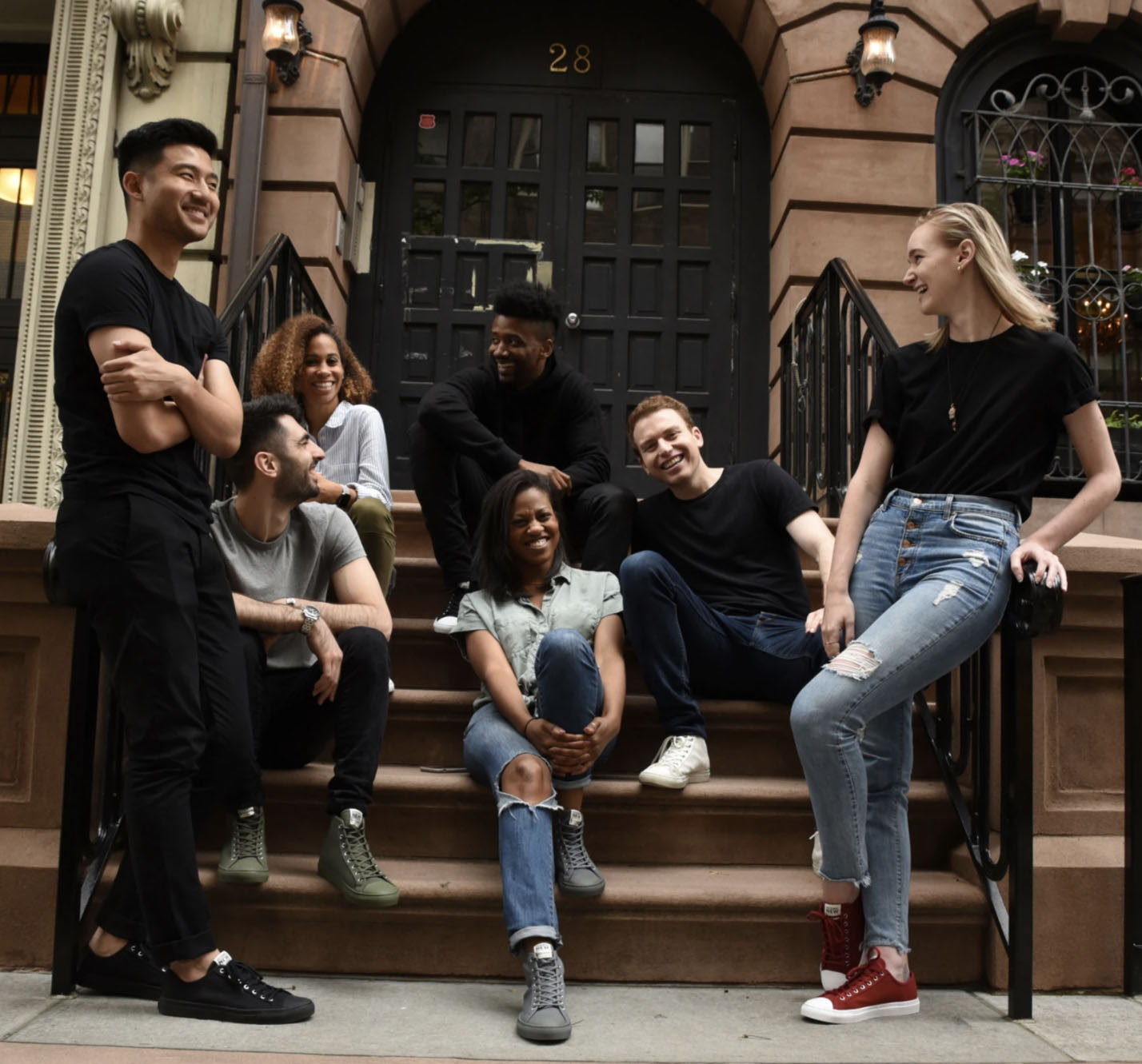
Circularity in fashion is not a new concept. In fact, prior to fast fashion becoming the status quo, the fashion industry was considerably more circular. Clothing formed a long-lasting partnership with the wearer’s wardrobe, being altered, fixed, tailored and passed on to others before ever being thrown out. With the rise of fast fashion came the idea that clothes were disposable items, to be worn – an average of just 7 times here in the UK – and then chucked. If your clothes cost less than your average lunchtime meal, it is no wonder we hardly expect them to last any longer.
A linear economy, such as the one we currently have, follows the ‘take, make, dispose’ blueprint. Raw materials are extracted and resources used to make a product, which serves a purpose and then is disposed of.
With its disposal, all the raw materials and resources are lost – an estimated $500 billion worth of textiles each year. The only way to make money in this system is to sell as many items as possible, and pay as little as possible for the resources used to make them. In this way we have created a positive feedback loop of low value items and disposability, where one leads to the other.
A circular economy, contrary to the above, maintains the value of items long after their initial purpose. The blueprint is ‘reduce, reuse, recycle’, where fewer resources are used because resources already in use (e.g. in the form of clothes) are reformed and reused again and again. In this system, value is created by maintaining products in the system – reusing and recycling – and minimising the raw materials required.
When it comes to circular fashion, one area that is lagging is shoes, possibly due in part to the lack of desirability of second-hand shoes. In the EU alone, 1.2 million tonnes of shoes are thrown out each year. In the UK, around 15% of waste shoes are reused (e.g. via charity shops), and the remaining 85% are sent to landfill. Another reason they are not frequently recycled and repurposed is due to their complex material makeup – shoes are generally made from a mix of materials. Rubber or EVA foam soles, leather uppers, plastic stitching – the list goes on. In fact, shoes can be made of up to 40 different types of material stitched or glued together, making them notoriously difficult to recycle.
Part of the problem is that brands and consumers don’t consider the full lifecycle of clothing and shoes; post-consumer life is rarely considered in the design process, leading to designs that are impossible to repair or recycle, severely truncating their potential useful life. By incorporating reparability and recyclability into the design process, the economy will be free to move in the circular direction, thereby making use of the vast quantities of wasted resources landfilled each year. The alternative is to produce shoes that are made from sustainably sourced materials and biodegradable, meaning that at the end of their life they can at least not contribute to landfill waste.
These are fundamentally different models to the current linear economy and will take some pushing to become the norm. However, there are some brands leading the way in sustainable footwear!

Another brand that performs a full lifecycle assessment to measure the full impact of their shoes is Hylo. The various materials used in Hylo’s trainers are all natural and plastic-free, meaning that theoretically they could biodegrade. Rather than recommending this, however, Hylo provide a returns service (in return for a £10 voucher) in order to have shoes broken down into new Hylo products – the ultimate circularity. The company is also carbon negative. As a relatively new company, the proof will be in the pudding and it remains to be seen if 100% recyclability of these shoes is viable.

Adidas’ Ultraboost DNA Loop trainers are a concept style made from 100% recyclable TPU material designed to be returned at the end of their life to be recycled into new trainers. Its creation from one material means that it is much easier to recycle than other shoes. This design is merely a concept shoe made to dip a toe into the waters of circularity, but its creation does beg the question: if creating such a shoe that performs well, is economically viable and has end of life options is possible, then why is this not the modus operandi for all of Adidas’ shoes? Or indeed all shoes ever?

Another ‘sustainability-lite’ option similar to Adidas, Salomon are releasing a 100% recyclable shoe called Index.01 that, at the end of its useful life, can be returned for free to be upcycled into Salomon ski boots. This is a great concept as it provides evidence that it is possible to create a high-performance shoe that is 100% recyclable – not just able to be downcycled – and presumably profitable. However, it raised the same question as above: why only one style? Will this technology be rolled out to other styles? If it proves profitable, will it be rolled out across other ranges, or is it merely a way of dipping a toe into the sustainability space? Only time will tell, but it’s a promising start.
US-based Thousand Fell takes a materials-first approach to making trainers, focusing on using materials that can biodegrade or be recycled. They have also partnered with Terracycle so that unwanted and worn-out shoes can be broken down into their component parts to make recycled raw materials, ready to be made into new shoes again. Some materials are downcycled, but nothing is sent to landfill, thereby creating a circular system where materials are used and reused continually. Again, as a company that launched in late 2019, it’ll be interesting to see whether the environmental credentials hold up a few years in, but it looks promising so far!

Nothing New Shoes launched in 2019, and do what they say on the box – the shoes are made from recycled materials, reducing the need for virgin materials. Using recycled post-consumer plastics, recycled fishing nets, recycled cotton and cork, the shoes are primarily made from sustainable materials built to last. At the end of their life, send them back. They’ll get partially recycled or sent to charity in return for $20 store credit.
It’s interesting to note that the vast majority of these footwear brands are only producing more sustainable footwear in recent years. As the main premise of circularity is that it requires customers to send products back, we will only be able to see the true impact of these brands in the coming years. We find ourselves in a space of limbo, albeit it with a lot of hope, while we wait to see whether consumer behaviour (i.e. returning shoes once they break) can match up perfectly to the technology of recycling and reusing. And, of course, whether the brands view it as an economically beneficial route to pursue.
Ultimately, it is both our demand for new items, and the ways in which we create them that is problematic. Frequently buying from sustainable brands won’t solve our climate crisis, nor will infrequently buying fast fashion items, if they ultimately end up in landfill. What we need is a mindset shift away from the disposable clothing model, in line with principles of circular fashion. Reduce, reuse and recycle all need to be co-opted by brands and individuals alike, from reducing the amount we buy, to calling for better material use and demanding end of life options from brands, to voting for governments who will implement systems that allow brands to become better.
Ultimately, it is both our demand for new items, and the ways in which we create them that is problematic. Frequently buying from sustainable brands won’t solve our climate crisis, nor will infrequently buying fast fashion items, if they ultimately end up in landfill.
What we need is a mindset shift away from the disposable clothing model, in line with principles of circular fashion. Reduce, reuse and recycle all need to be co-opted by brands and individuals alike, from reducing the amount we buy, to calling for better material use and demanding end of life options from brands, to voting for governments who will implement systems that allow brands to become better.
Ultimately, we need to create a model that benefits those moving to a circular production system more than those exploiting the linear one we currently have in place. Until we provide economic incentives to move towards to circularity, it will be difficult for those attempting a more sustainable model to ever get a foothold in the industry.
And as individuals we must play our part by buying only what we need, mending what we own and supporting brands that are leading the way in truly sustainable footwear. The options are out there, you just have to do a little legwork to find them. And in sustainable shoes, that should be a little more comfortable.
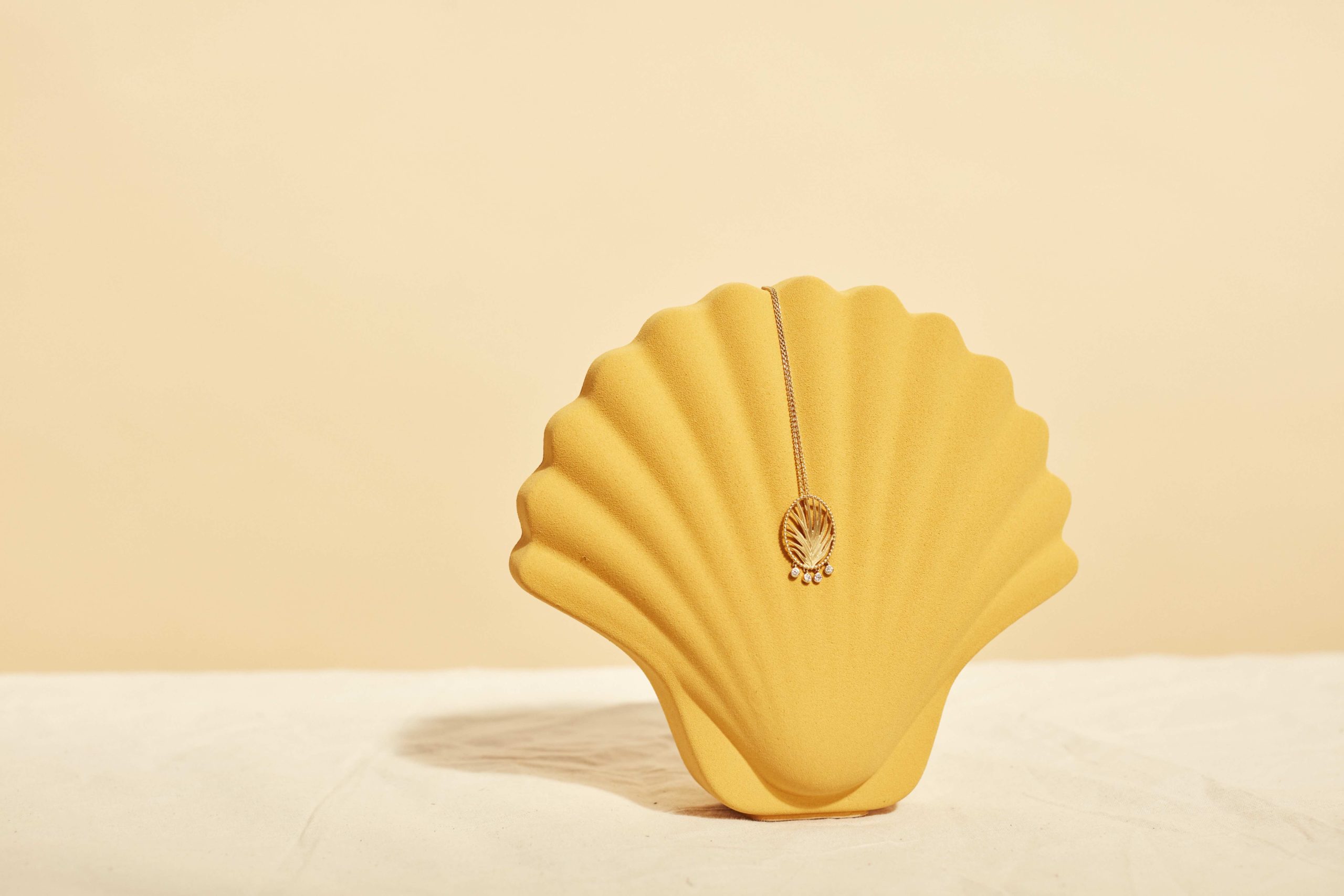
Demand for ethical jewellery is on the rise, and it’s not just your everyday, demi-fine jewellery brands that are taking their sustainability credentials seriously. In the fine jewellery category, where precious stones are more commonplace, brands are turning their backs on the traditional diamond trade in favour of the lab-grown variety.
Kimaï, a London-based jewellery brand, is one young business betting on lab-grown diamonds in the wake of a generational shift towards ethical consumption. It’s founders, Sidney Neuhaus and Jessica Warch, both come from Belgian diamond trading families, so they’ve seen first hand how the establishment is failing to keep up with changing consumer priorities. “Over the years, we came to realise that the industry wasn’t evolving with our generation,” Warch says over Zoom. “We felt like it didn’t talk to us — it’s a very traditional and intimidating industry — plus with all the controversies from blood diamonds to child labour, that’s not what we’re looking for these days.”
It’s widely known that the diamond trade has a long and problematic history. Extracting diamonds from the earth using open pit mining is an environmentally disruptive and carbon intensive process — an estimated 57kg of carbon is released for every carat of diamond mined and some mines are so huge, they can be seen from space. Not to mention the human rights issues associated with diamond mining. Despite the introduction of the Kimberely Process in 2003 (intended to prevent the flow of conflict diamonds into the industry) there are still loopholes that allow for the exploitation of workers. The Kimaï team believe that traditional diamond supply chains — which includes the miners, transporters and traders — are still therefore untraceable and untrustworthy. “Our mission is really to bring transparency to an industry that has known many controversies to show that today, we can do things differently and have the exact same result,” says Warch.
Enter lab-grown diamonds. Kimaï works directly with a lab in Israel and a team of jewellers in Antwerp who make and send the finished product straight to the customer, meaning their supply chain cuts out all of the middle men. As for the diamonds, they’re commonly made using a Chemical Vapor Deposition method, which essentially places diamond seeds (small pieces of natural diamonds) into a chamber filled with methane and hydrogen gas, which are heated to between 900 and 1200 degrees celsius. In under a month, you have a rough diamond ready to be cut and polished.

Despite the increasing popularity of lab-grown diamonds — a 2018 study found that 70 percent of Millennials would consider an engagement ring with lab-grown diamond — there’s still an element of education needed to convince traditionalists. “Many people can see them as fake diamonds, so we see part of our role is to educate them on the stones,” says Warch. “Lab-grown diamonds are identical chemically and physically to mined diamonds — our parents are in the industry and no one is able to tell the difference between the diamonds, and at least these don’t come at a cost for the planet or the people working in mines.”
Millennials might also be drawn to lab-grown diamonds because of cost — they’re often at least 30 percent cheaper than mined ones, because much of the perceived value of a natural diamond comes from the huge effort it takes to extract it from the earth. The brand’s range of engagement rings starts at £1,360, a far more accessible price point considering it was once considered standard to spend three months salary on a ring.
Warch believes that their price points reflect a significant shift away from the way her parents’ generation value jewellery, compared to the Millennials buying from Kimaï. “Our parents were putting all of their savings into jewellery, but we have different priorities,” she says. “We want to travel and experience different things while still wearing nice jewellery, so the value of the piece doesn’t come from the price of the stone, but the emotional value behind the piece.”
For now, the brand sells through their online store. This is partly out of necessity (COVID has temporarily shuttered their brick-and-mortar retailer, Browns) but this hasn’t proved to be a barrier to sales. In fact, fine jewellery sales globally have boomed since the start of the pandemic. In the US, one on Kimaï’s strongest markets, jewellery sales grew by $1 billion in June, July and August compared the 2019, with sales from engagement rings leading the growth. “Most people are at home, so it’s the right time to be selling pieces online and of course, even if you’re not wearing new clothes, you know that jewellery is going to last,” says Warch.
So how do you sell engagement rings online? As with most occasions in the last year: “We do it on Zoom!” says Warch. “We get on a call with customers, we try to understand what they’re looking for and based on that we offer them different stones and walk them through the entire process.” This is where being a young start-up plays into Kimaï’s strength — the personal touches of dealing with a small team is reassuring. “Customers have our number, they know they can contact us at any time, so although you’re not seeing the piece in person, we’re sending as much information as possible.”
The lab-grown diamond market still holds an extremely small market share — by 2023 it’s projected to represent only two percent of the diamond market — but it’s growing rapidly. De Beers, the world’s leading diamond seller, announced they’d enter the world of lab-grown diamonds in 2018, last year completing a $94 million lab in the US where they plan to create 200,000 lab-grown diamonds a year. It’s certainly an investment that Kimaï believe will pay off as the next generation of fine jewellery buyers come of age. “We grew up with a new mindset [regarding sustainability], but the younger generation are even more extreme — they grew up knowing they want to have a positive impact on the environment,” says Warch. “I think it’s just going to keep growing and keep taking a bigger market share.”
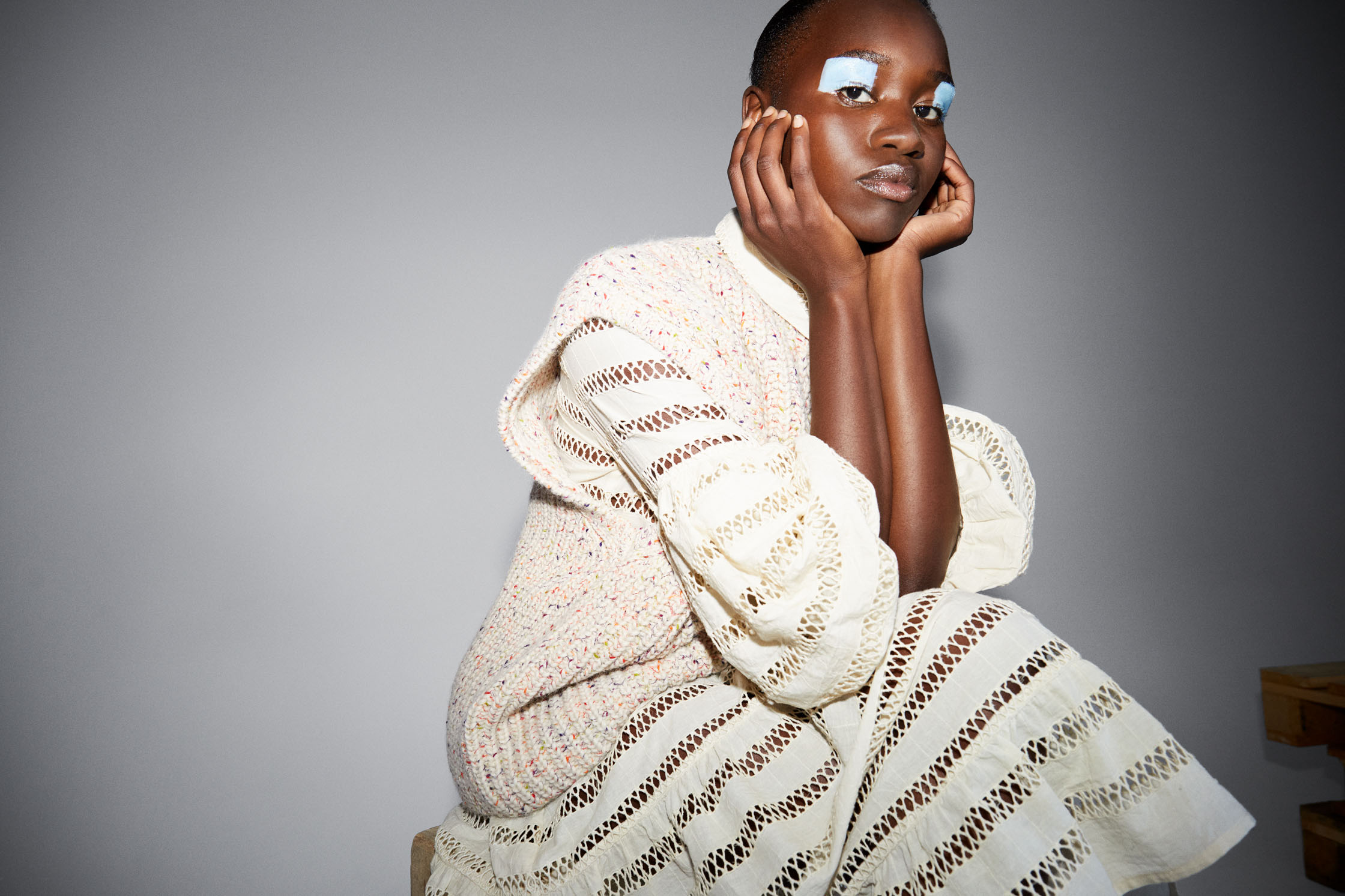
With Cecilie Thorsmark at the helm and a Sustainability Action Plan in place, Copenhagen Fashion Week presents two things: the most exciting Nordic talent and opportunities to drive real, positive change. Here, Naja Munthe shares more about the search for better fibres, the meaningful projects she holds dear to her heart and how she’s developing a more responsible business by the day.
For me, it’s eco-friendly production and packaging, emission reduced production, organic materials, waste reduction and social responsibility.
The natural world has captured my interest for almost as long as I can remember. As a child, I asked my parents countless questions about all parts of the world, whether on social, scientific, cultural or moral levels.
It’s a good place to start!
If cotton is to be sold as organic, it requires a third-party certification from independent, accredited certification agencies. Organic cotton is generally grown as part of a production system that sustains the health of soils, ecosystems, and people. It’s also grown from non-genetically modified (GMO) seeds and without synthetic chemicals, such as fertilisers or pesticides. The goal? Less soil and water contamination and fewer health hazards for farmers, manufacturers, and consumers. Increase soil fertility and biodiversity.
Capturing and reusing waste, the recycled fibres are produced in a “closed-loop” process. They’re made from eucalyptus and FSC certified leftovers from the timber industry – the fibre yield per acre from the trees used in the Lenzing fibres is up to ten times higher than cotton.
The fashion industry is a sector with a high environmental impact; it involves a very long and complicated supply chain, which is associated with large consumption of water and energy, use of chemical substances, water and air pollution, waste production and finally microplastic generation.
I love them all, really. But PLAN International is in my heart. Back in 2013, we made a jacket for the benefit of empowering Indian seamstresses to become self-sufficient and an integral part of their work organisation – with health checks, pensions, insurance etc.
There is no doubt that the COVID-19 pandemic has largely affected the fashion industry, from the people it employs to the waste it has created. However, this crisis could also present an opportunity to rethink the industry. At MUNTHE, this unique set of circumstances can hopefully bring about a positive change and allow us to rethink our values – especially the CSR strategy, which is more important than ever.
So excited! There will be something, but nothing resembling fashion week as we knew it. Until COVID-19 sent most of the world into freefall, fashion brands would pay a lot of attention to throw ten-minute runway shows to advertise clothes that would be available six months after, capturing an elusive sense of relevance. At this Copenhagen Fashion Week, MUNTHE again takes the opportunity to do our own thing and focus on the things we are good at – a new kind of lockdown creativity.
Usually, there can be around 300 people for a fashion show. Now there is a new chance – due to the circumstances of this Fashion Week – to do something extraordinary and try something new. MUNTHE, therefore, decided quite quickly that we wanted to make a film, which should be supported by a picture universe.
The AW21 collection it’s all about diversity and originality.
Shop less and find your style instead of following the trends. Do your brand research to shop more sustainably and donate unwanted clothes.
First, do the research and learn about fabric production and different textiles. Choose brands that use recycled fibres and opt for more sustainable options like organic cotton.
Be curious, ask questions and start looking at your clothes differently. Instead of only asking yourself; Does this piece look great on me? Rather answer some of these questions: Who made these clothes? What materials were used? Where did they come from? Where were they made? What’s it like to work there? Etc. Being interested in the answers to these kinds of questions is the best first step towards changing the story for the people who make our clothes.
It will be sustainable
No matter what the world looks like when we get out on the other side, we need to consume less. The COVID-19 crisis will result in a permanent change to our shopping behaviours and ways of conducting business. MUNTHE will upgrade our supply chain and fulfillments – and strengthen our technological platforms.
Sustainable Collection Munthe
@muntheofficial
Find out more about MUNTHE’s CSR strategy here.

Baum und Pferdgarten celebrates creative, individual and expressive style through collections filled with playful prints, artful colours and fluid, androgynous tailoring. What’s more, it strongly believes in the importance of circularity and is working hard to become more responsible and transparent in all aspects of its operations – including sourcing recycled and organic fibres with a lower environmental impact.
Here, Rikke Baumgarten and Helle Hestehave – the duo behind the brand – reveal some great memories from CPHFW and the magic behind Copenhagen style.
Rikke: I’m especially proud of our Autumn Winter 2016 show where everything just came so beautifully together; the collection, the mood, the venue and the soundtrack. We were inspired by the movie ‘I Am Love’ and Villa Necchi outside of Milan where the movie takes place – we ended up having the show in Thorvaldsen’s Museum here in Copenhagen. Thorvaldsen worked as a sculptor in Italy for most of his life and the museum reflects this in a beautiful manner. We also worked with two really talented composers for the soundtrack who incorporated voices from the movie and recorded “real-sound” from Italian church bells, street noise etc.
Helle: To me, the Spring Summer 2020 show was an important milestone. I feel like we really set a new direction for the brand and came with a fresh point of view. We started working a lot with transparent fabrics and silhouettes in a way we are still exploring.
Helle: All the collections from Copenhagen tend to be very wearable and appeal to a broad audience of real people. Plus, the people in the streets of Copenhagen are really good at dressing complicated pieces down and making it real rather than an inaccessible dream.
Rikke: Copenhagen style is very effortless and represents a kind of casual coolness where less is more.
Rikke: We can definitely reveal the challenges! Less than a month ago we cancelled the entire production we had been working on for months and changed our format 100% – from one digital format including a lot of people in one venue to another digital format where nobody has had to meet in person. The new format is all about celebrating the diverse ways of creative expression we experience from the #BaumFamily.
Helle: That’s all we can reveal for now – but please stay join our Instagram for the live streaming of the show on Wednesday, Feb. 3rd at 20:00 CET!
Rikke: Obviously, sustainability is very important to Baum und Pferdgarten!
Helle: With every collection, we are working towards becoming more and more sustainable in terms of fabrics, production and transport – but we are also looking into converting everything around the collection like the wrapping, the hangtags and so on. We are very happy to be part of Copenhagen Fashion Week where sustainability is at the top of the agenda!
Rikke: We feel like everybody in our team and the Baum community is holding their breath and just waiting for this to be over, so we can all start to live life to the fullest and enjoy ourselves again.
Helle: We are very confident in the future and have high hopes for Baum und Pferdgarten.
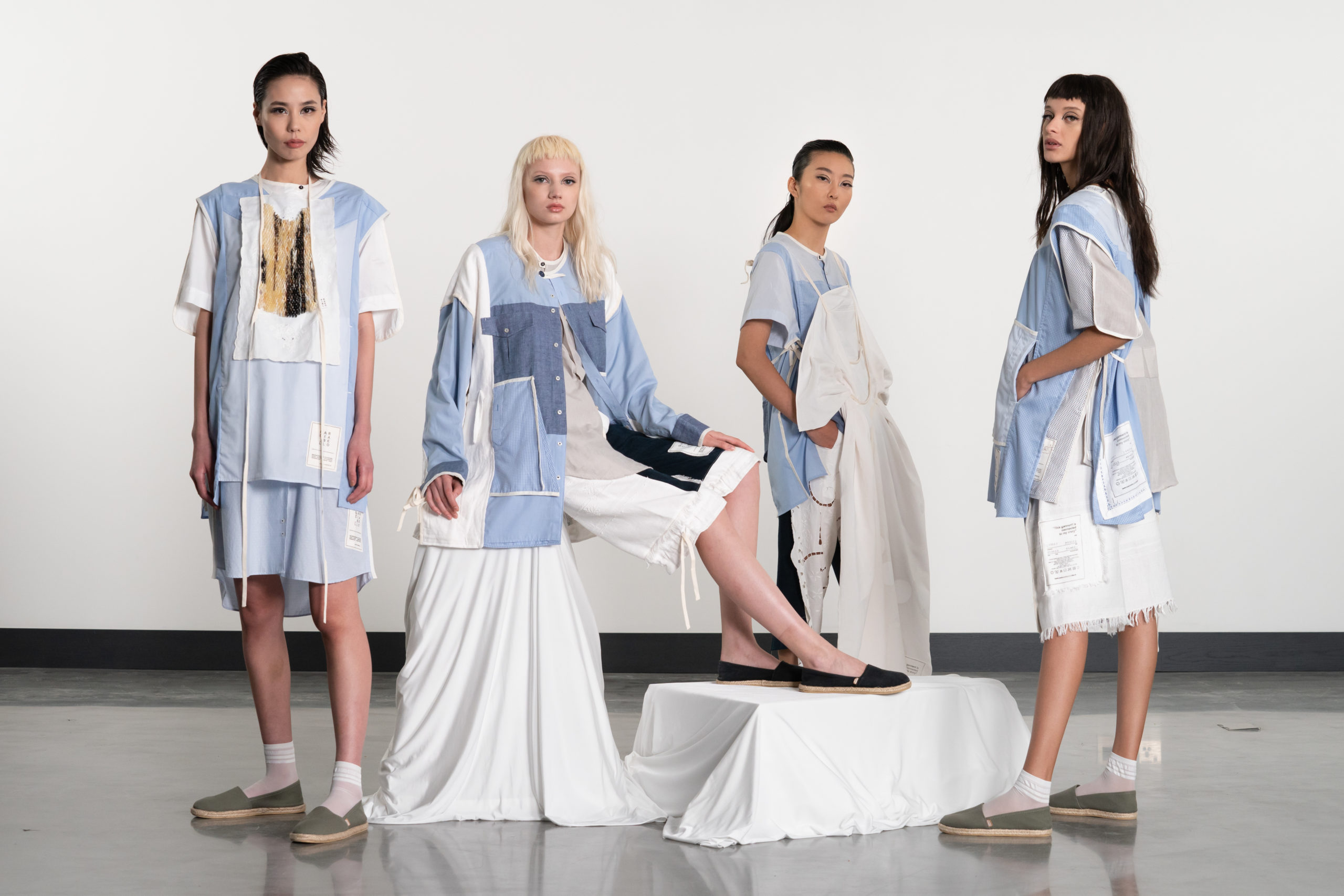
A growing number of designers and textile factories are innovating with hyper-local textile waste created within their communities to offer new, exciting ways of reducing and transforming unwanted pre and post-consumer textiles into covetable goods.
The fashion industry’s textile waste problem is one that has been ignored by brands since the dawn of fast fashion. But just as clothing production and consumption has increased exponentially in the last decade, so too have the piles of clothing around the world that end up in landfills or incinerated. Currently, only 1% of textiles gets recycled into new clothing and without drastic industry-wide change, 150 billion tonnes of clothing could be in global landfills by 2050.
Accelerating textile waste innovations are thanks in part to our changing definition of waste, says Dr Christina Dean, founder of upcycling brand The R Collective and Redress, a Hong Kong based NGO that aims to prevent and transform fashion’s textile waste. “If we rewind 10 years, waste was a filthy word – but I don’t think it is anymore – consumers are beginning to legitimise and care about waste reduction,” she says. “I think in the mainstream consciousness there is an understanding that there’s a lot of waste, and that it’s not really waste, it’s just a resource that hasn’t been utilised.”
The shifting perception of waste has also been fuelled by the pandemic, which highlighted exactly what happens when the production, shipping and sale of clothing comes to a grinding halt. “The stranded or cancelled orders and materials, garments stuck in warehouses or on the shop floor — all this created a much more tangible understanding of just how deadstock garments can actually accumulate,” says Dean.
While COVID shone a light on the systemic issues that need addressing, on a smaller scale there are already a host of designers and textile manufacturers tackling waste in forward thinking, innovative ways. Their solutions are hyper-local, working with the textile waste generated by their community or nearby industries to create products that are reframing how we think about unwanted textiles.
But what is hyper-local waste and how can designers find and use it?
“Finding your waste streams means going into the material source you like and finding the places in which it originates,” says Dean. “It’s about finding a waste source that is both creatively exciting, suitable for the product you’re making, and is in some way reproducible or replicable.” Broadly speaking, hyperlocal waste can be split into two categories: pre-consumer and post-consumer. Crucially, brands should be looking for waste textiles that are local to their manufacturing, not necessarily their studio. “The main reason for that is reducing the cost of moving waste,” says Dean. “Waste is cheap or free to get, but there is a lot of handling costs and limitations that come with that, so keep your supply chain close to the waste.”
Meet Juliana Garcia Bello, an Argentinian designer based in Arnhem, an hour outside of Amsterdam. She launched her label, Garcia Bello, in 2017, designing pieces made from old clothing donated by her local community in Buenos Aires. After moving to the Netherlands in 2019, Garcia Bello implemented the same sourcing model she used in Argentina and quickly got to know her community in more ways than one. “I put flyers up around my new neighbourhood and received a lot of messages and donations,” she says. Working with locally donated materials means that Garcia Bello collections are a direct reflection of her community. “I always receive the materials first and then try to understand what I have to work with. These are the materials that I have here, in this neighbourhood with these neighbours, so that’s what I need to work with.”
Last year, Garcia Bello entered the Redress Design Award (RDA), the world’s largest sustainable fashion design competition. It was here that she developed a production system that requires 16 old garments: two pairs of jeans, five tablecloths, and nine shirts that can be deconstructed and transformed into 16 new garments. Her innovative framework, that any designer could work with using their own materials, won her the 2020 RDA Womenswear prize. “Juliana is a replicable designer,” says Dean. “She’s using a post-consumer waste source, like shirts — every country has shirts — and the pattern in itself is like a cookie cutter. Whether you’re in Haiti or Poland, particularly in places with post-consumer waste, that concept can be very interesting.”
While post-consumer solutions are important, it’s crucial to address the waste that is generated before textiles become clothing. When garments are cut in the production phase, as much as 15% of the fabric can end up as waste. Going even further back into the supply chain, the Fixing Fashion parliamentary report found that 440,000 tonnes of supply chain waste is generated in the preparation of fibres to make yarn and in the garment production phase.
Working to reduce pre-consumer waste in Southeast Asia, a global manufacturing hub, is Aummy Ninkamhang, the CEO of textile innovation startup Stelapop. Based in Ayutthaya, Thailand, Stelapop sources pre-consumer waste textiles from neighbouring countries like Vietnam and Cambodia, transforming offcuts into materials that can be made into everything from furniture to coat hangers. Stelapop has developed 20 different materials, all of which are coloured speckled by recycled textile fibres.
Still in its infancy as a factory, Stelapop is already working with companies like Converse, Everlane and American Eagle to develop new materials from textile waste that are beautiful, high quality and versatile. Their goal is to one day produce durable outdoor materials that can be used to build houses. “We don’t want to produce something from waste that will just become waste again,” says Ninkamhang. “We want people to appreciate it, so we always ask ourselves: how can we turn waste into something that everyone will love?”
Originally a textile designer, Ninkamhang has seen first hand the amount of pre-consumer waste created by fashion and is passionate about getting brands to take responsibility for this stage in the supply chain. “Brands are really focused on post-consumer waste because there’s more marketing to be done around it,” she says. “It’s something consumers understand, so it creates more impact with them. But brands have no idea how much production waste they create, and they don’t feel like they need to be responsible for it.”
Part of the solution, she believes, is for brands to design with a garment’s end of life in mind in order to ensure it can be recycled easily. In order to de-trim waste textiles of buttons and zips, Stelapop had to develop a machine that could do this time-consuming, usually manual task. Ninkamhang says the fact that there is technology to attach but not remove trims from garments shows a lack of forethought that is typical of clothing production. “We want everyone to be responsible for their production and to think about closing the loop before going to the store front,” she says. “We have to think about how to assemble and disassemble these trims from the beginning — we have to care about these small things before we focus on the big things.”
Looking at the wider picture, how do we reduce waste creation in the first place? Reducing excess stock is at the core of the issue, and Dean believes that technology will be fundamental to this. “We need technology to understand what people are buying and make it quicker,” she says. “Making it quicker always makes people feel frightened, but actually, faster supply chains are more responsive and therefore would reduce waste.” Digital technology can also be used to understand what materials you’ve got, and where they are, she says. “If a lot of businesses knew their own inventory, they’d probably design into it a lot easier. The reality is that they’re all working off old Excels — a hangover from the analog days.”
All of this really boils down to the seemingly insurmountable issue of reducing consumption. But seeing as dismantling the consumption-driven economy that the fashion industry relies on is unlikely in the timeframe we have to get in line with the Paris Agreement, there will always be opportunities for innovative, scalable solutions to textile waste. “I think consumption is really important, which is at odds with what one might think as an ‘environmental person’,” says Dean. “But ultimately, I think consumption can be okay if it’s done purposefully and intentionally, that’s where fashion can be a force for good.”
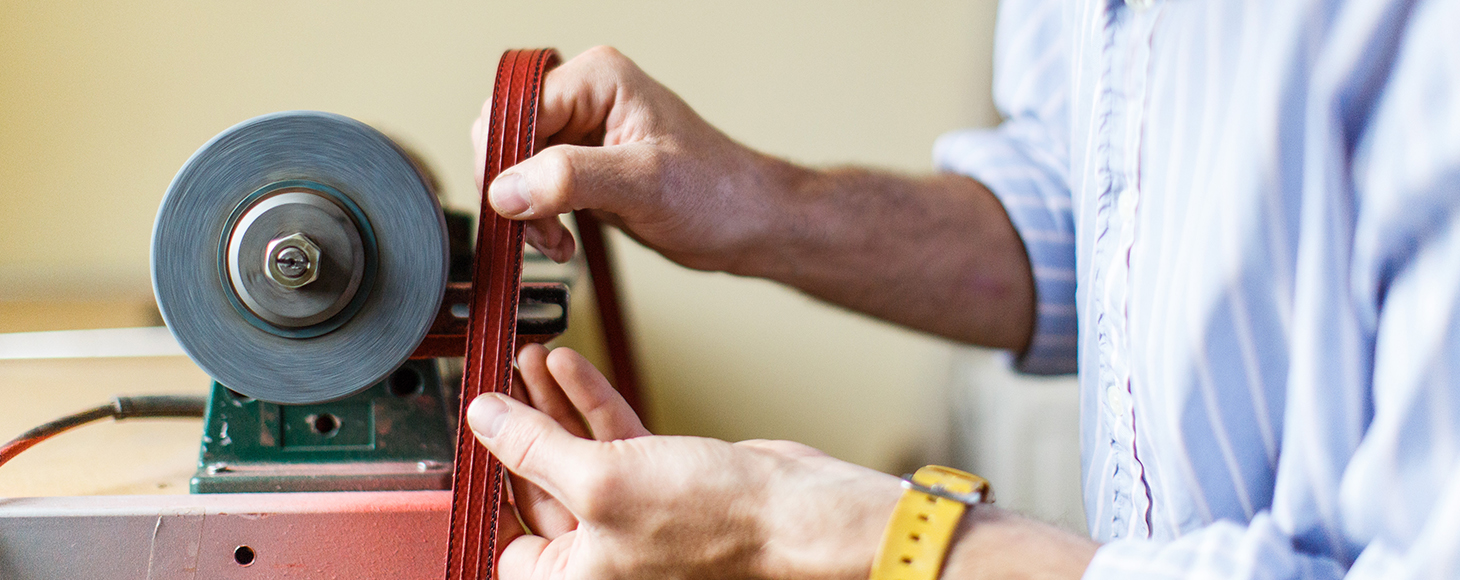
As more of the population join in on the fight to be increasingly sustainable, it’s no surprise that ethical champion companies such as Elvis & Kresse are gaining traction and being rewarded for their efforts.
In a recent report by McKinsey & Company, of surveyed consumers, ‘67% consider the use of sustainable materials to be an important purchasing factor.’ With the vegan leather market also newly projected to be worth $90 billion in the next five years, it’s obvious that there has been a huge shift in consumers paying attention to eco-friendly material alternatives. Specifically, as a by-product of ethical and sustainability attitudes changing, people are becoming more and more interested in issues surrounding landfill and in educating themselves on where materials come from and where they are ending up.
It could explain why recycled material brand Elvis & Kresse had such a busy and successful 2020, despite Covid-19 restrictions and economic effects. Since 2005, they have been rescuing raw materials, transforming them into luxury lifestyle accessories and donating 50% of profits back to charities. Fast-forward to today, and you can see one of their weekend bags in the new V&A exhibition, Bags: Inside Out, as well as a film about their processes and environmental mission.
The museum purchased their classic, decommissioned red fire-hose Weekend Bag and it’s now a part of their permanent collection. The closing credits of the V&A exhibition plays host to some of the most forward-thinking and innovative examples of sustainability in fashion, and this is where you can find the Elvis & Kresse bag. It sits alongside other incredible designers experimenting with innovative and environmentally sustainable materials, including a Stella McCartney backpack made from recycled ocean plastic waste.
Clearly, this is an impressive feat for a small sustainable company. ‘My jaw dropped to the floor,’ smiles founder Kresse Wesling. ‘To be a part of the longer narrative of the exhibition is amazing and, if I think of how it is for our parents and the people who have supported the business for a long time, it just makes everyone’s year.’

But, where did it all start? Originally from Canada, Kresse met Elvis in Hong Kong in 2004 and, after following him back to the UK, for the first time in her life, she found she could be flexible, so took the time to really reflect on what she wanted to do with her life. ‘I’ve always been interested in waste, and back then, you couldn’t just Google ONS data,’ she starts. ‘I went to the British Library and explored what waste looked like in the UK, where it was and how much was there. The data was pretty stark, with 100 million tonnes of material ending up in landfill and recycling rates abysmally low.’
Kresse realised that a lot of the information was unspecific and concluded that when you don’t have the specifics it’s virtually impossible to turn a problem into a solution. ‘I started going to landfill sites to get to grips with what was actually there,’ she says. ‘When you spend a lot of time at these sites, you start to see the patterns of material coming in. I saw a lot of trucks that were clearly coming from specific industries, so I started making friends with the truck drivers to understand where those materials were being collected.’
I laugh as Kresse likens her early explorations to being like a salmon swimming upstream, but the reality is that in the world of sustainability, this really is the case. Change, development and progression don’t come easily, and those pioneering for change have worked day in and day out – often in unconventional ways like making friends with lorry drivers! ‘It was hard work, but I felt compelled to do it,’ she says. ‘I started to realise that a lot of the materials were definitely recyclable and filled with opportunity.’
After realising that the fire-hoses from London were heading to landfill every time there was an issue in their lifecycle, Kresse started researching the material and what could be done with it. ‘I couldn’t abide with the idea that this beautiful heroic material was going to go to landfill, even if there was ostensibly nothing wrong with it,’ says Kresse. ‘I refused to give up on the idea that it could be re-used as something else.’
Now, for over a decade, none of London’s fire-hose has gone to landfill and over 200 tons of material has been reclaimed to create the luxury bags Elvis & Kresse are so known for today. They also recycle many other waste materials such as coffee sacks and parachute silks, and they work with the Burberry Foundation to solve the problem of the 35,000 tonnes of leather waste produced each year by the European luxury industry.
Although Kresse wouldn’t say she is someone who has a particular interest in fashion, she definitely had a clear vision from the very off. ‘At the beginning of my research, I knew nothing about fashion or luxury and you could argue that I still don’t. But, what I did discover was a report about how the luxury industry was failing people and planet, and I just thought of that as a structural failure that I wanted to change,’ she explains.
‘I was given the beautiful opportunity of fire-hose – it has so much potential and is designed to protect human life, so in its second iteration, we wanted to make sure it’s set up to give back. We have three guiding principles: rescue, transform and donate.’
Today, sustainability sits at the core of the business, and runs off into every element of what they do – but Kresse is clear that there’s still a long way to go. ‘No organisation is perfect but every time we discover something that we can improve, we change it,’ she says. ‘When the government says it’s going to take five years to outlaw Q-tips, I find it embarrassing. It doesn’t need to take that long, all of the changes are willpower based – it can just be done.’
Vying for change is something that comes naturally to both Elvis and Kresse and, as we discuss the challenges of running a sustainability start-up, the passion is evident. ‘We have the same challenges as any company. And then, there are a lot of people that say the burden of sustainability makes it twice as hard, but I disagree with that,’ says Kresse. ‘The environmental and ethical side is what makes it palatable. Running a business is incredibly difficult, so if you were also running a business that was exploitative or degrading the environment, I don’t know how you’d sleep at night.’
As for the future, where do they plan to go from here? ‘We’re looking at being completely regenerative as a business by 2030, and carbon neutral way before that. We’ve started four research and development projects, and we’ve got a couple of new materials in the mix, some of which will be ready to roll out this year,’ Kresse explains.
I wonder if Kresse feels positive about the direction in which the public perception of sustainability and consumerism is going? ‘There are so many problems at the same time, and that’s the big issue,’ she says. ‘You’ve got, in one sense, the rise of ethical production, and it’s growing and scaling, certainly, I’ve seen that over the last couple of years.’
But on the other hand, you’ve got fast fashion companies that are growing too, some of which, as Kresse stresses, are considered ethical-free zones. ‘So, we’ve got to address deep-seated cultural issues if we’re going to really get to grips with sustainability,’ she continues. ‘Trickle-down economics doesn’t work, and we have to accept that. We have to stop importing goods that have been produced in a non-environmental and unethical way, education and culture has to shift and people’s perception of success has to change.’
It’s about keeping the momentum, our finger on the pulse as consumers and continuing to campaign for change and we can certainly start by sharing the stories of, and supporting, those companies like Elvis & Kresse that are doing it right.
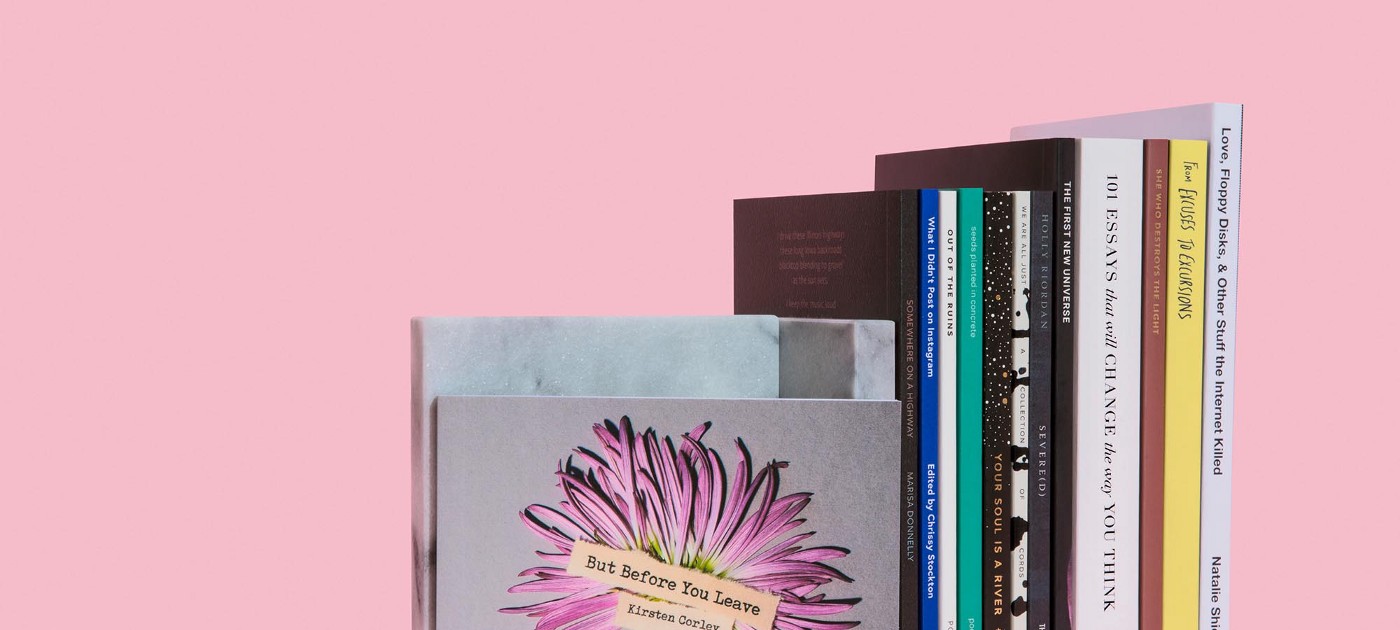
An expert on consumer culture and sustainability, Elizabeth L. Cline is an author, journalist and public speaker based in New York.
She was responsible for the critically acclaimed 2012 expose Overdressed: The Shockingly High Cost of Cheap Fashion and later released this highly anticipated follow-up book The Conscious Closet: A Revolutionary Guide to Looking Good While Doing Good.
Far more than your average style guide, this paperback (which is printed using Sustainable Forestry certified paper and also available as an Audiobook) is “a call to action to transform one of the most polluting industries on earth — fashion — into a force for good.”
What I particularly love about it, is how Elizabeth recognises that we all take a different approach to fashion, plus different attitudes and needs when it comes to clothes. It’s split into six digestible parts, including “The Art of Less” and “The Art of More” and is packed with practical advice about everything from basic mending stitches to thrift techniques. Along the way, it’s peppered with short yet insightful Q&A interviews with the likes of Kathleen Talbot, VP of Sustainability at Reformation and Kate Sekules, Founder of VisibleMending.com. The illustrated cover by Kaitlin Kall is chic and colourful, too.
Lauren Bravo’s writing is always a real treat to read thanks to the way her personality shines through in every article — even her Instagram bio makes me smile “London, clothes, custard.”
Lauren’s second book How To Break Up With Fast Fashion presents fast fashion as the ultimate toxic relationship and encourages you to fall back in love with the clothes that are already hanging up in your closet. A reminder that no outfit should cost the earth, this honest and relatable guide is packed with handy tips (personally, detoxing my inbox has been a real game-changer) and highlights some achievable ways to embrace slower dressing. If you’d like a little taster, here’s a link to an extract from Lauren’s book on Refinery 29. Her list of five fabrics that “don’t ruin the planet” includes Piñatex used to create the Liwan Forward collaboration, too.
Dana Thomas is an acclaimed journalist and New York Times bestselling author who began her career writing for the style section of The Washington Post. Released a few years after her groundbreaking book Gods and Kings: The Rise and Fall of Alexander McQueen and John Galliano, Fashionopolis: The Price of Fast Fashion and the Future of Clothes sees Dana deliver a comprehensive look at what designers and companies (both big and small) are doing to propel the broken fashion industry toward a better future. In order to do so, she travelled the world to speak to entrepreneurs and innovators, learning more about what these leaders of change are doing and the technology in development.It’s an engaging, eye-opening read that’s persuasively written.
On my hour-long commute to work (which I never thought I’d find myself missing!) there’s nothing I love more than popping on my headphones and listening to the Wardrobe Crisis podcast. In the witty and persuasive book that sparked it, VOGUE’s first ever Sustainability Editor Clare Press — who also once ran a vintage store — explores the history and ethics behind what we wear and traces the origins of icons like Chanel and Dior. Thoroughly researched and beautifully written, this book is required reading for anyone who’s looking to feel good about their wardrobe again.